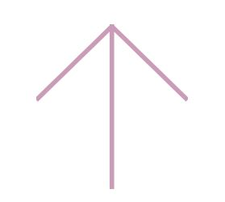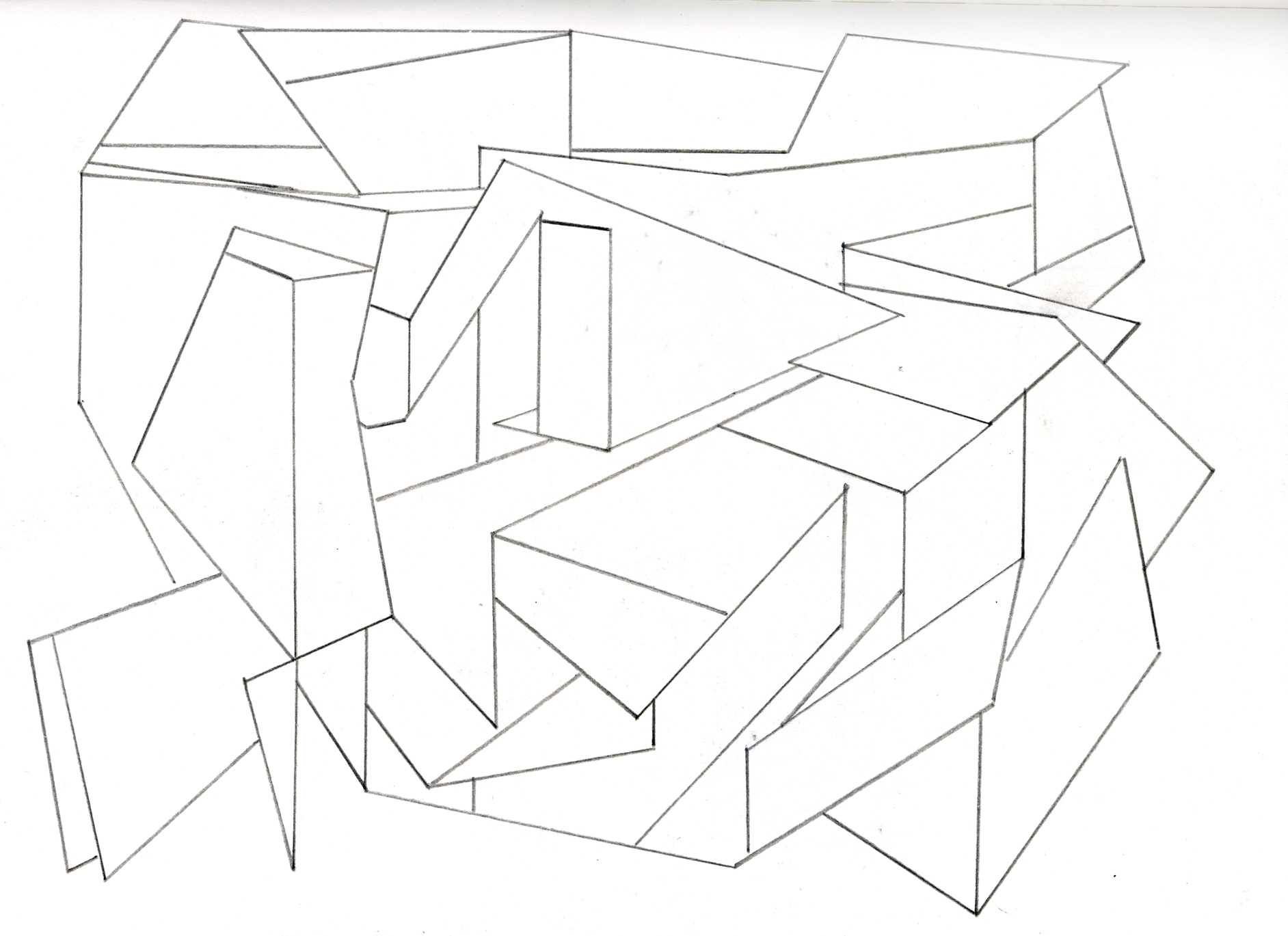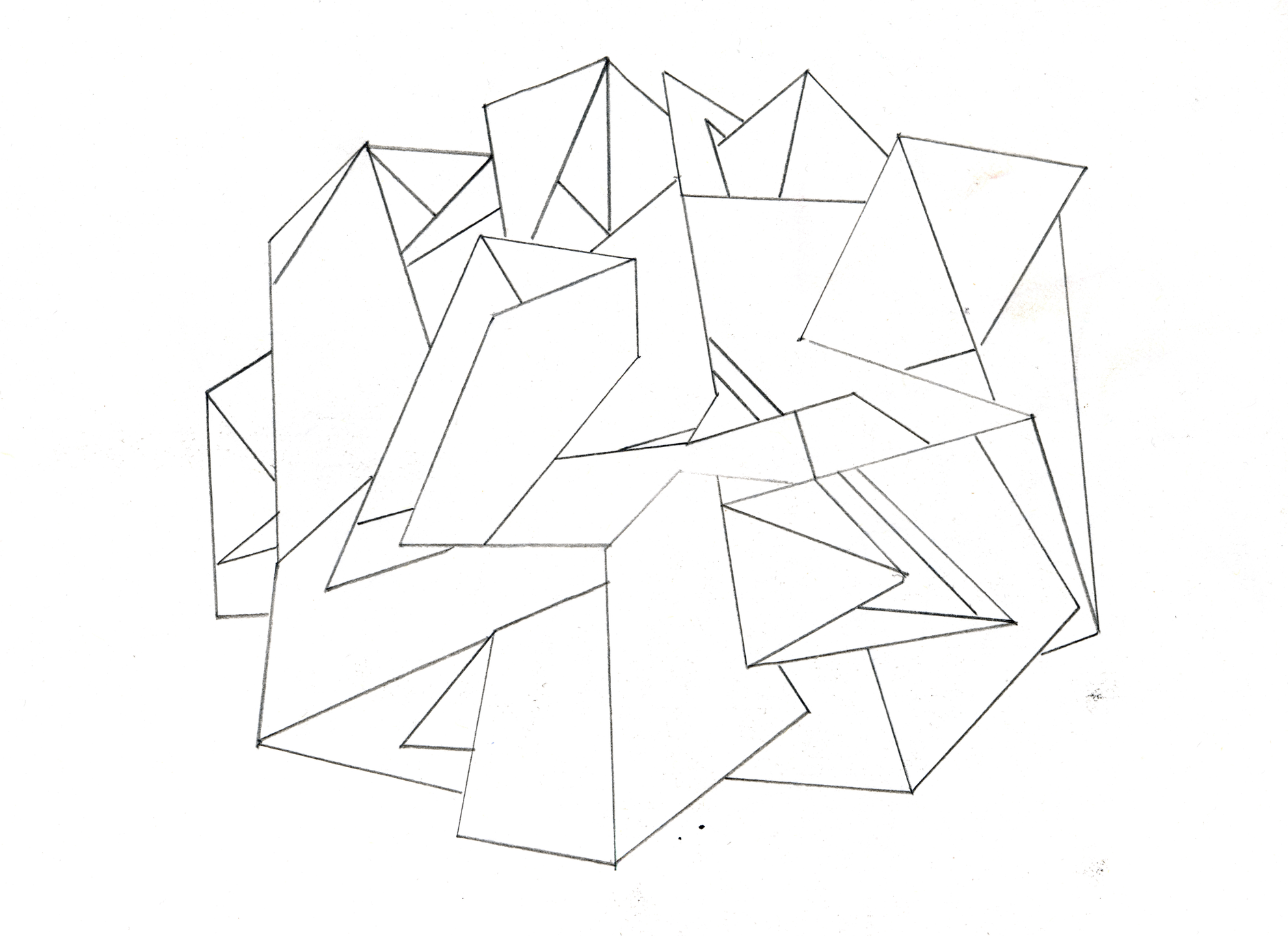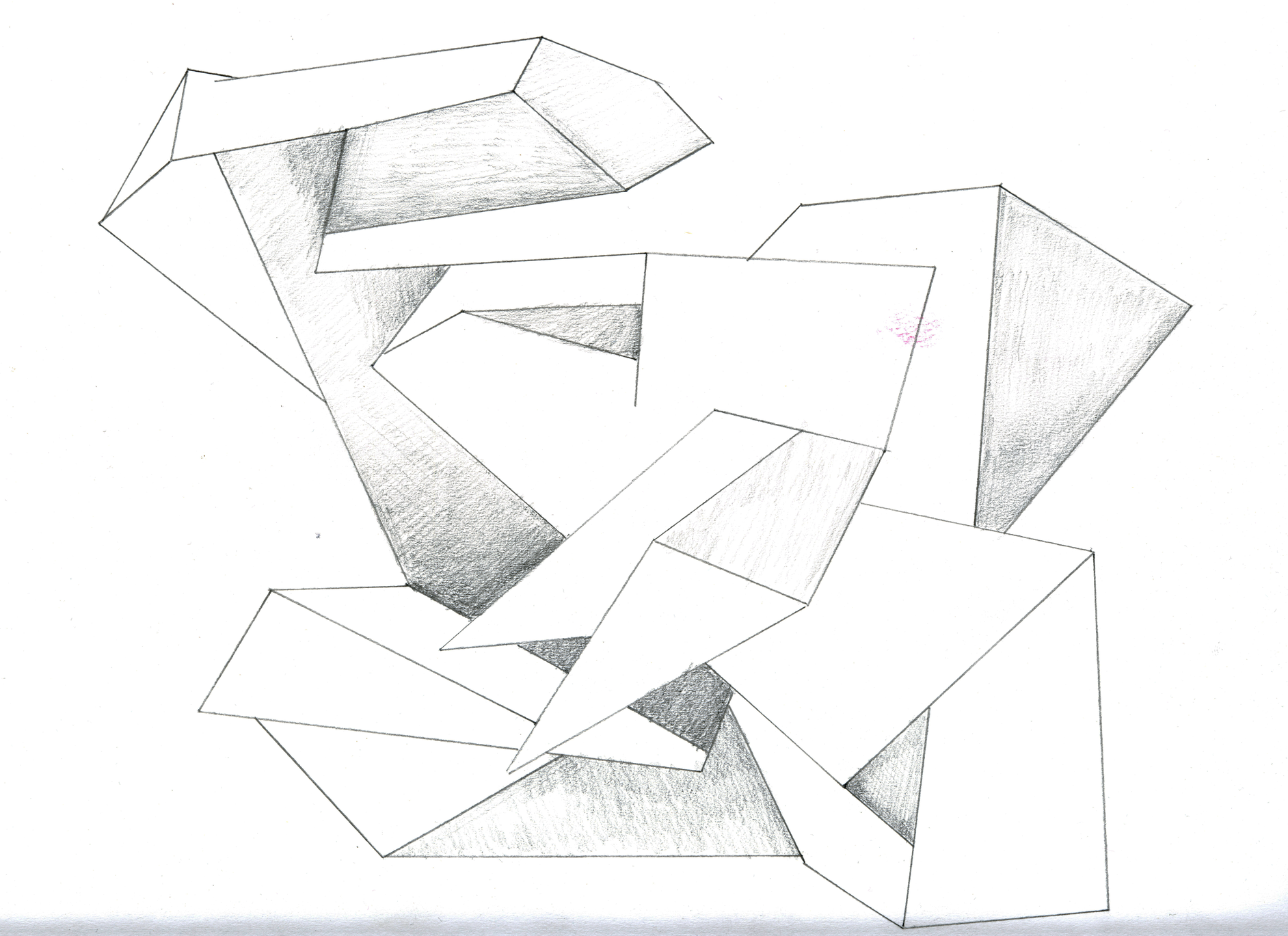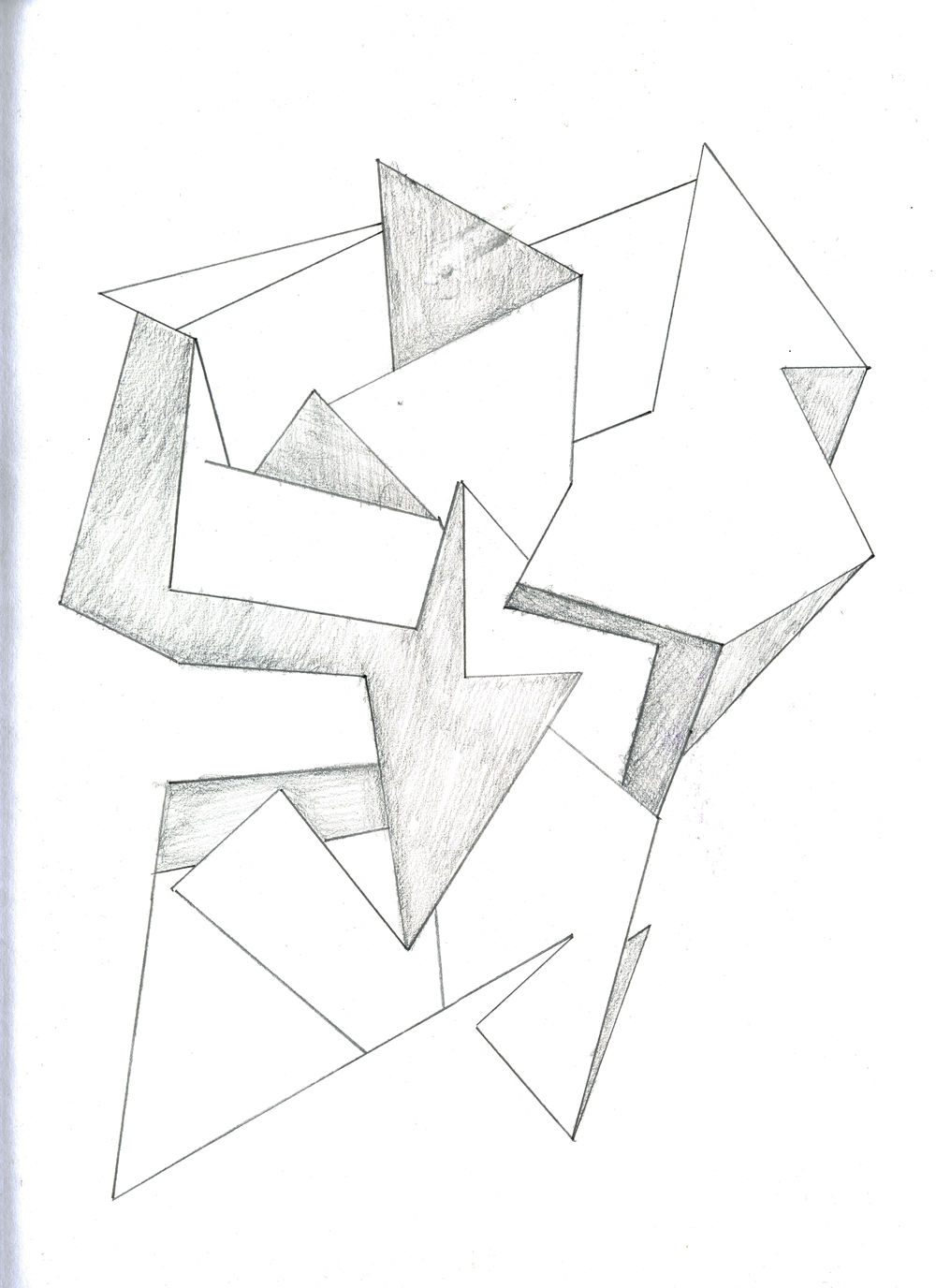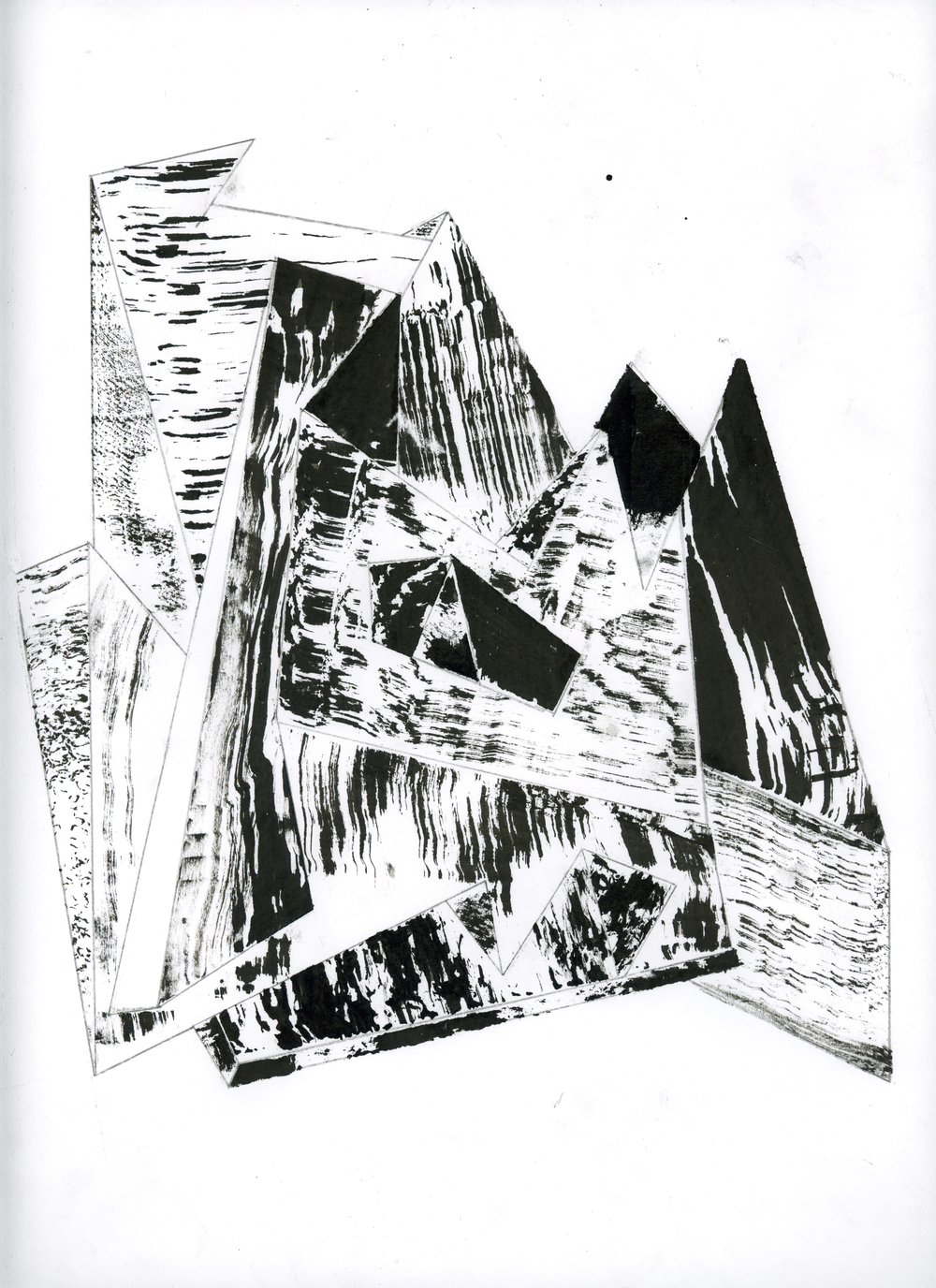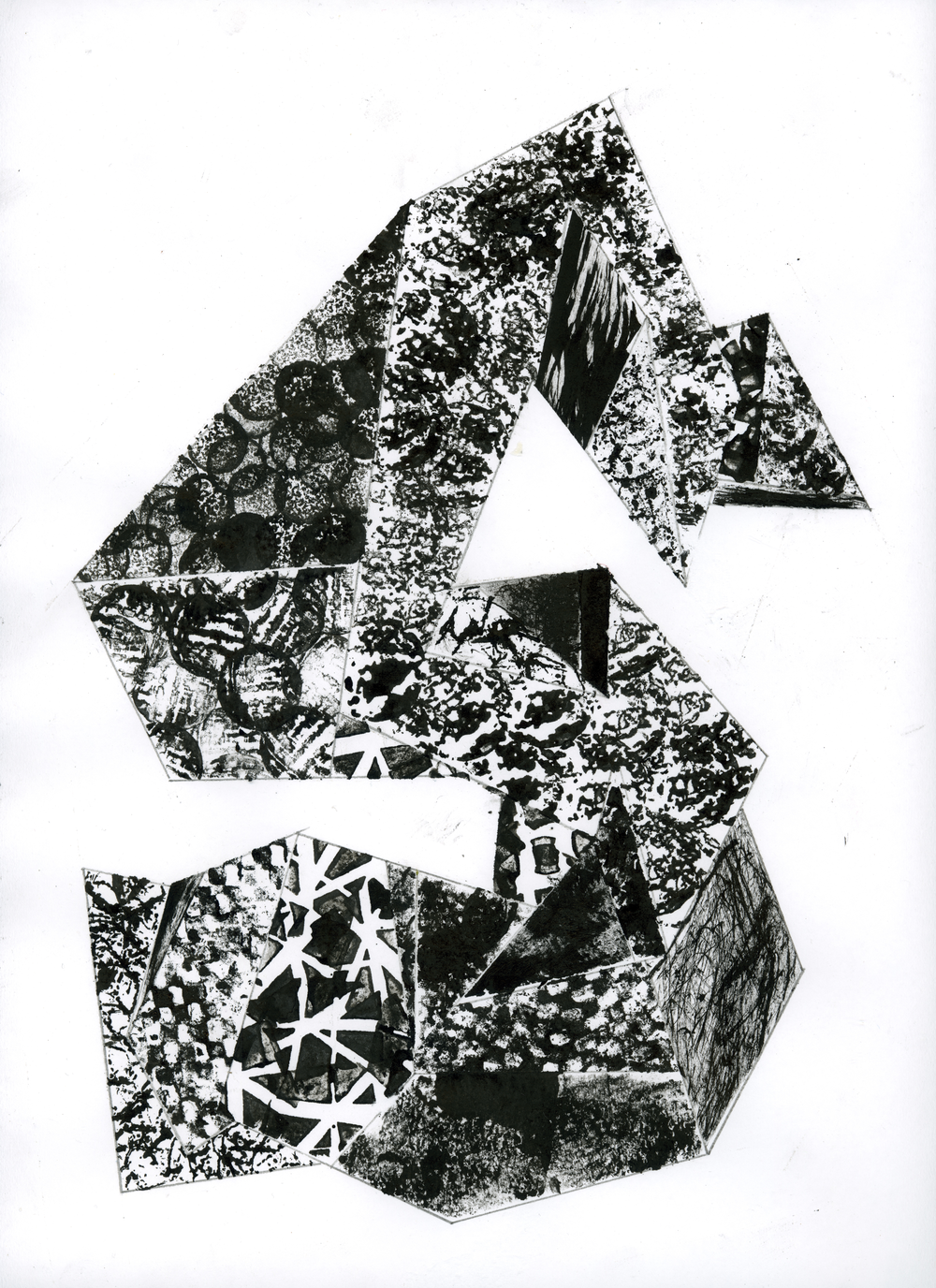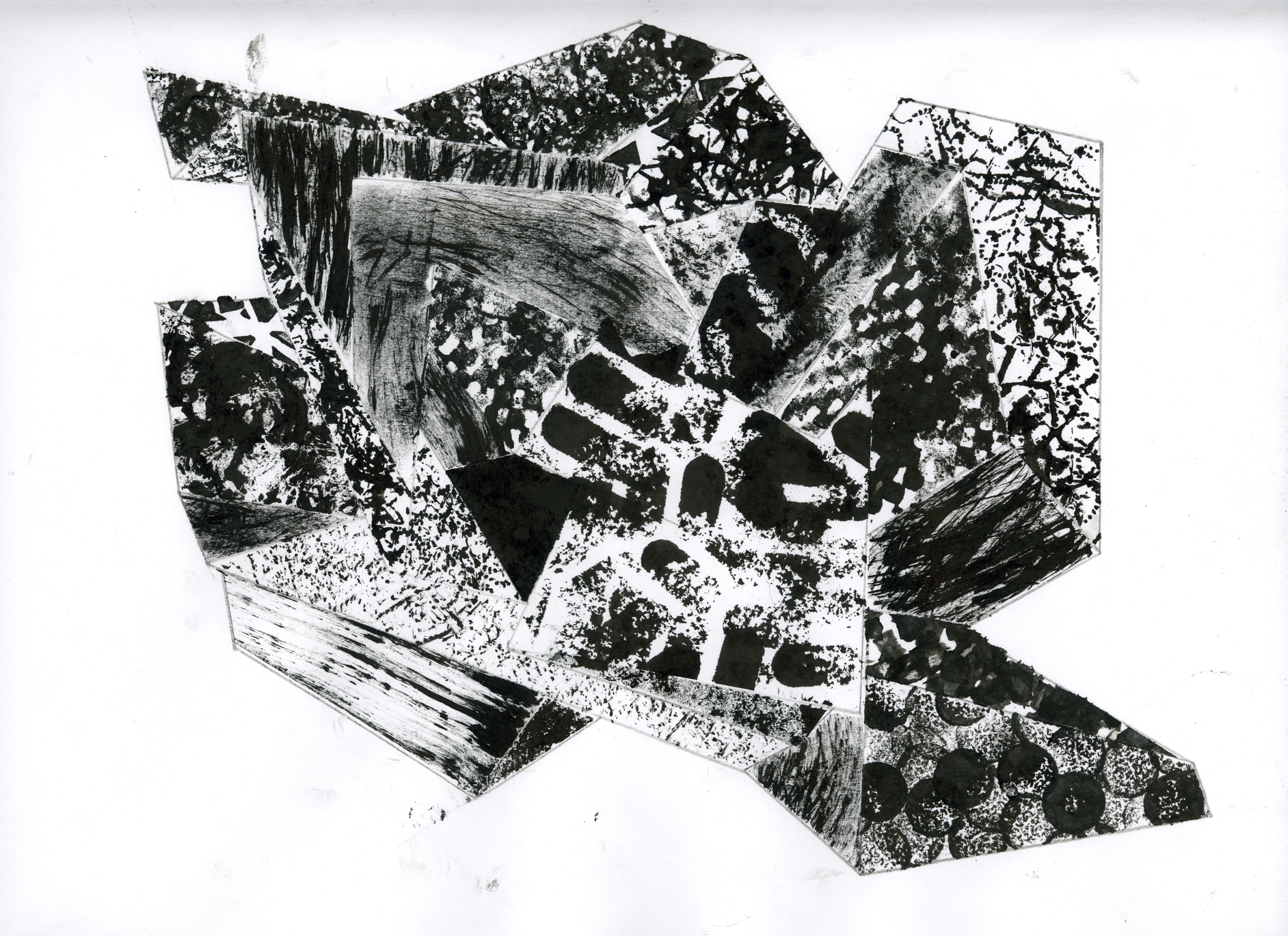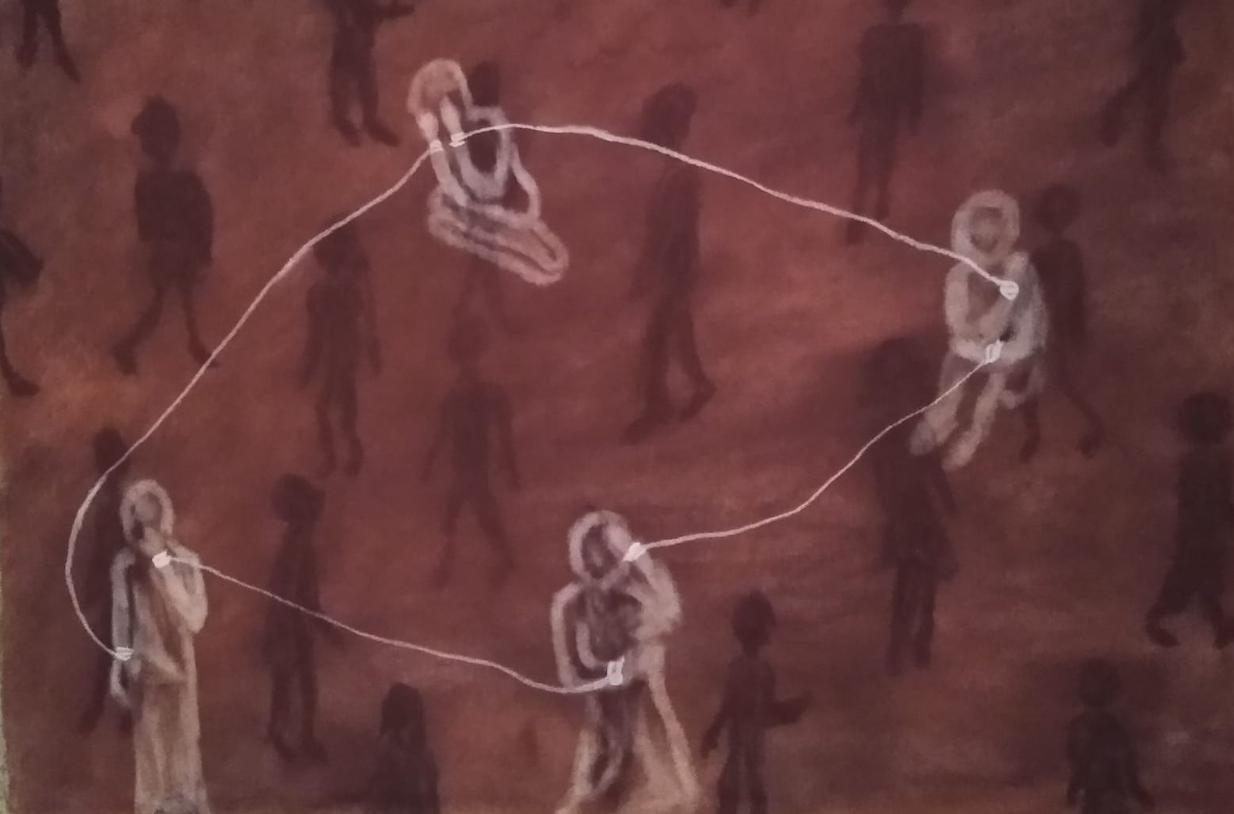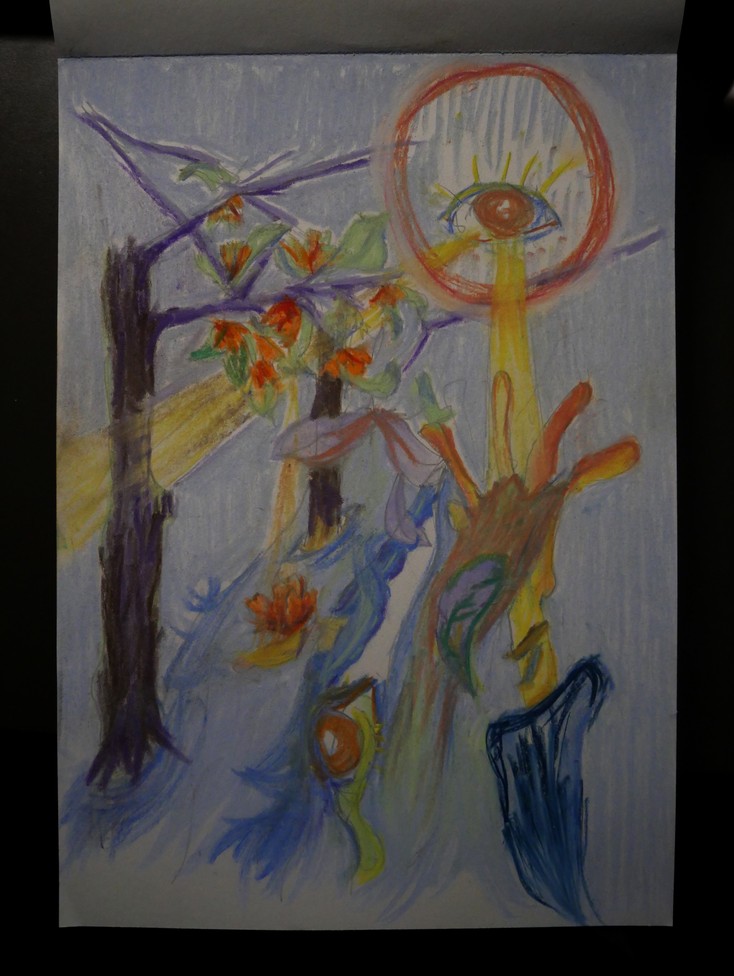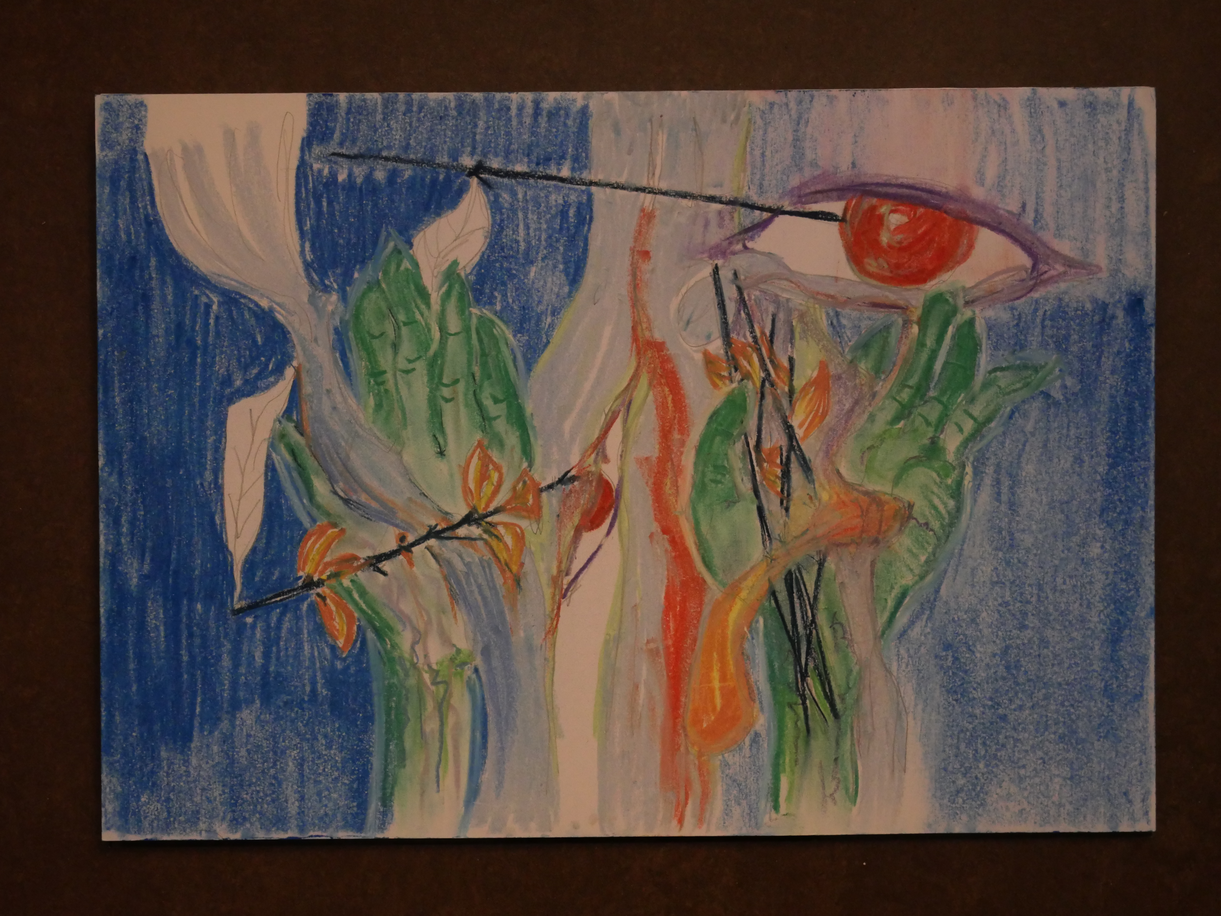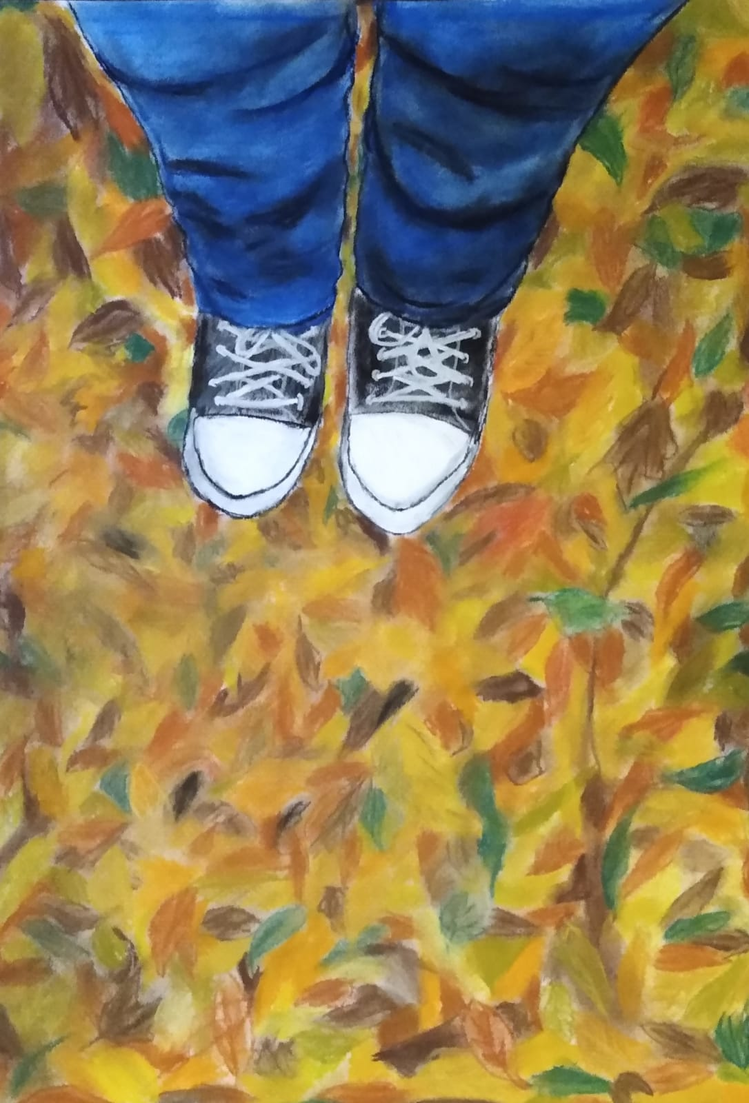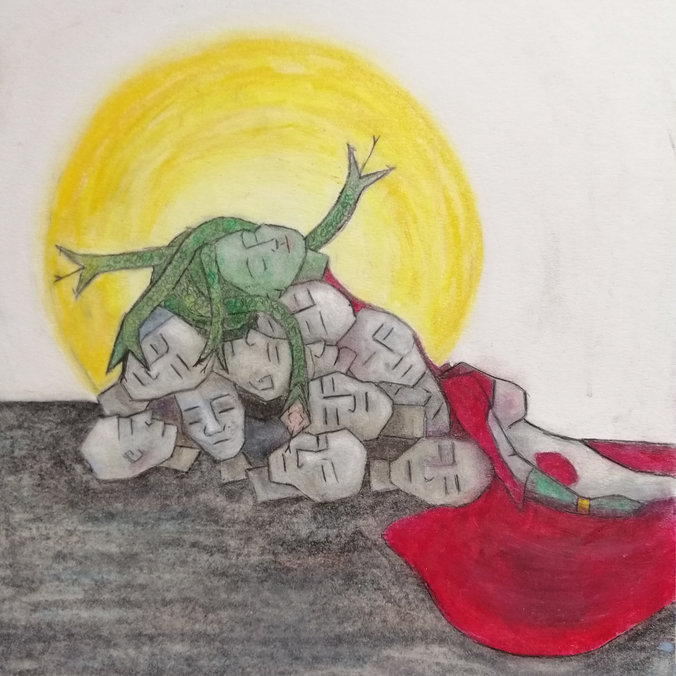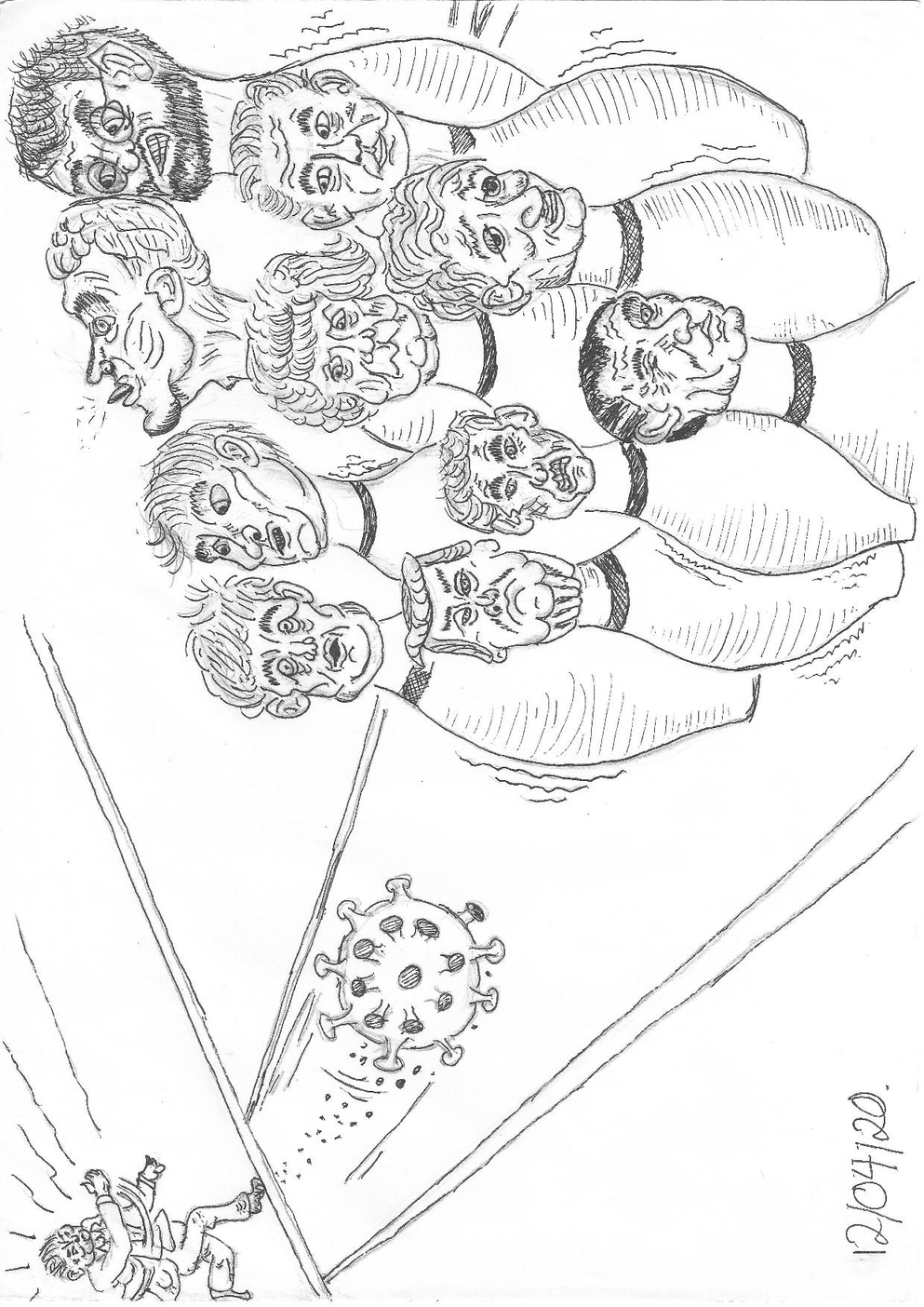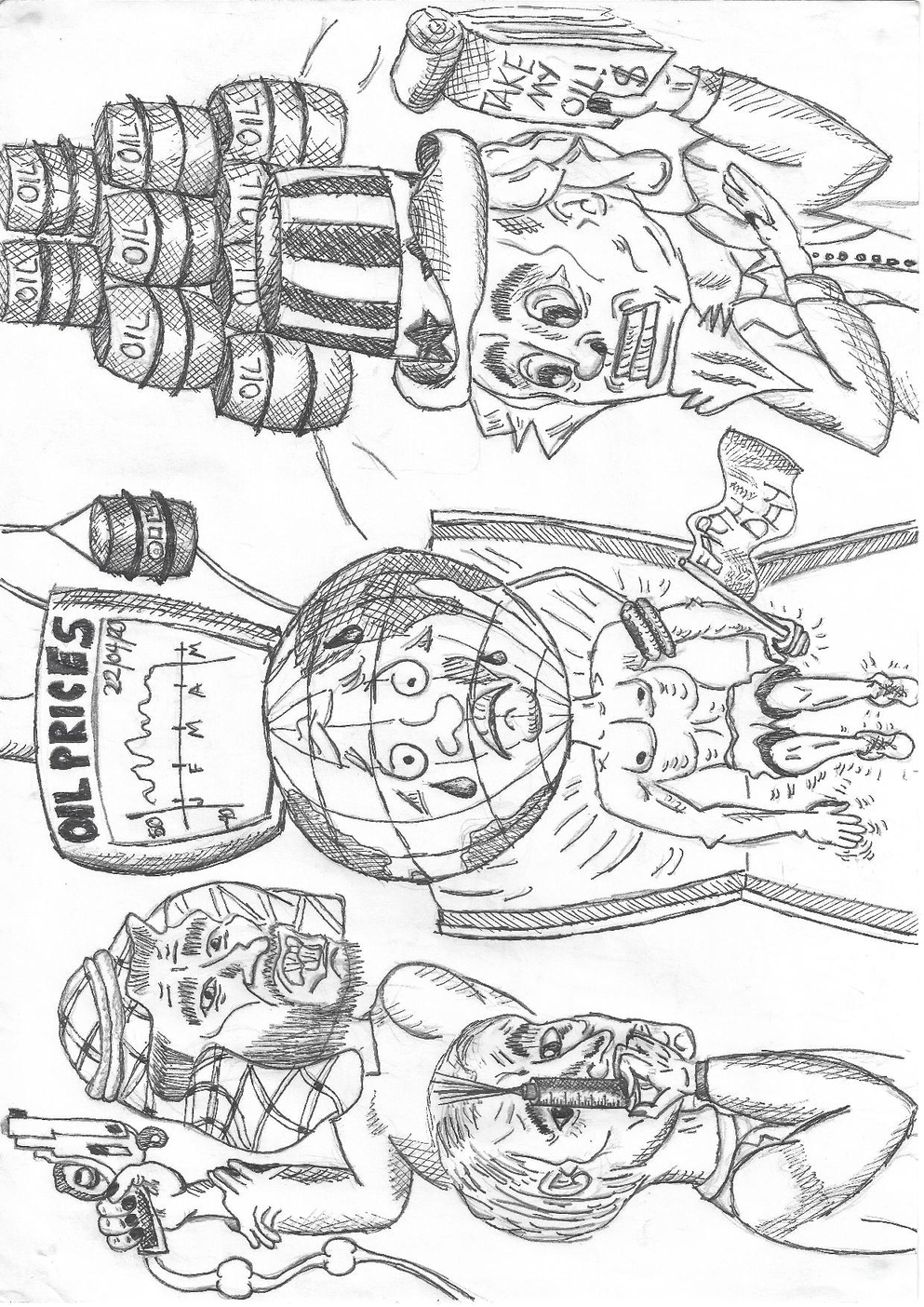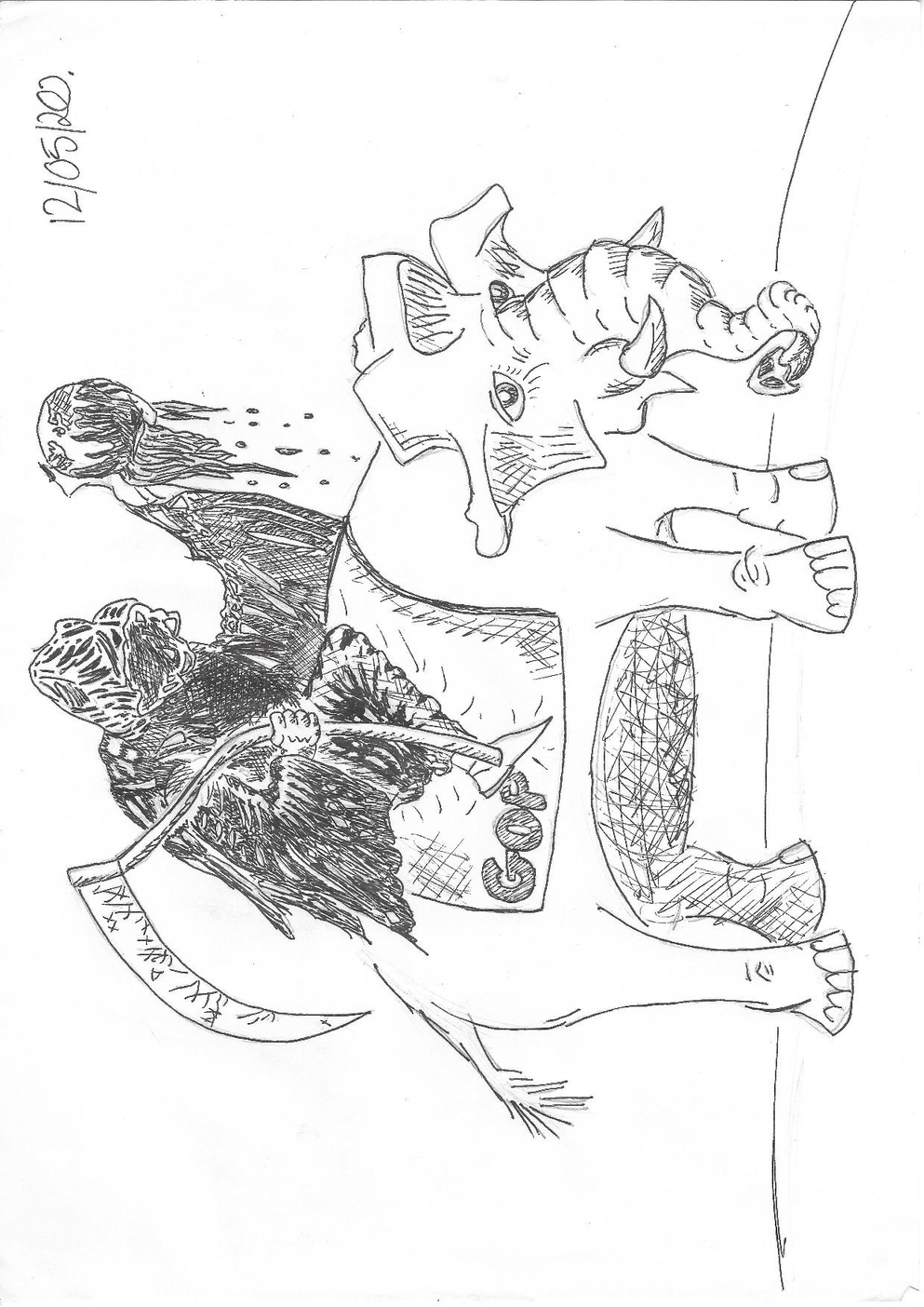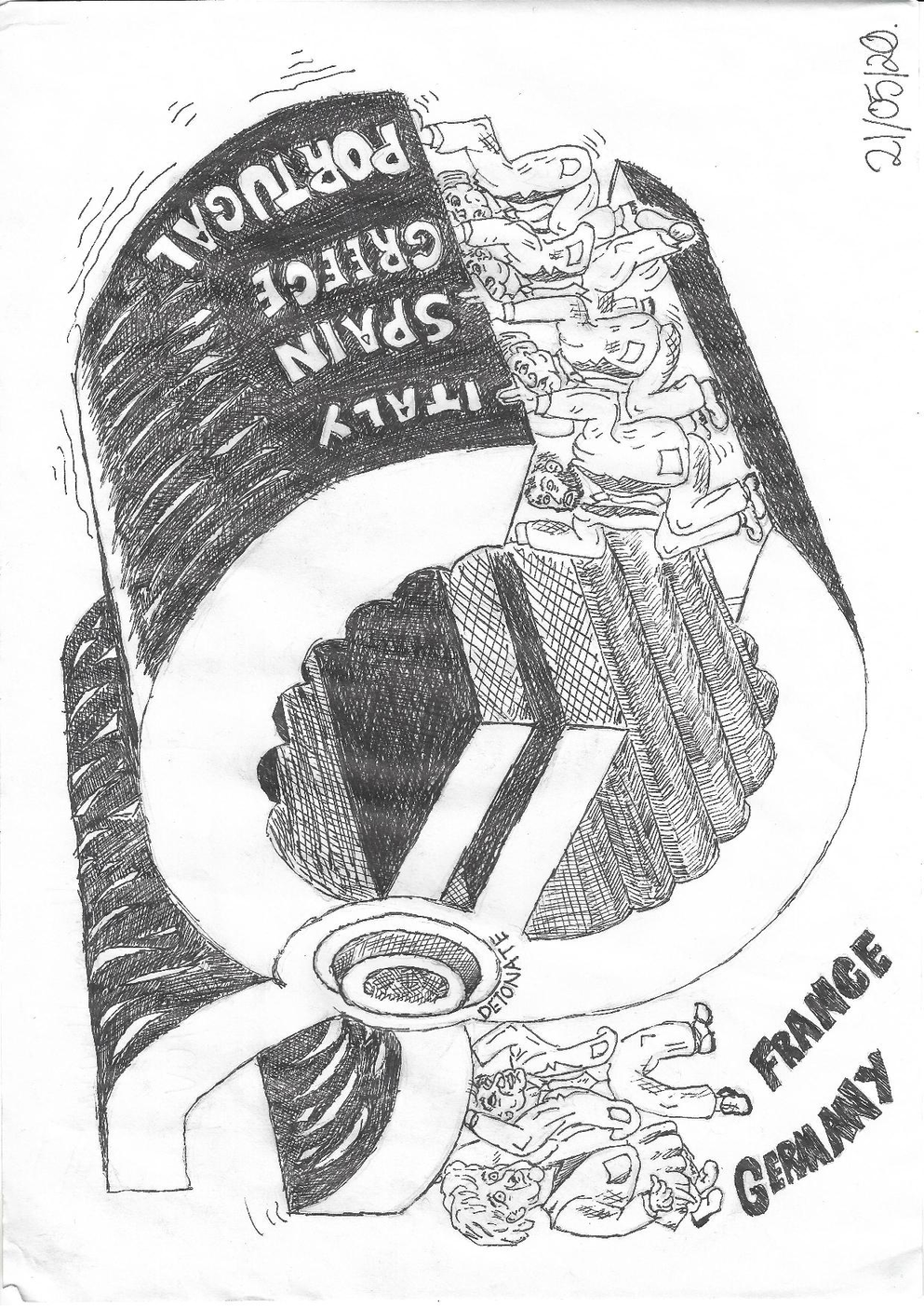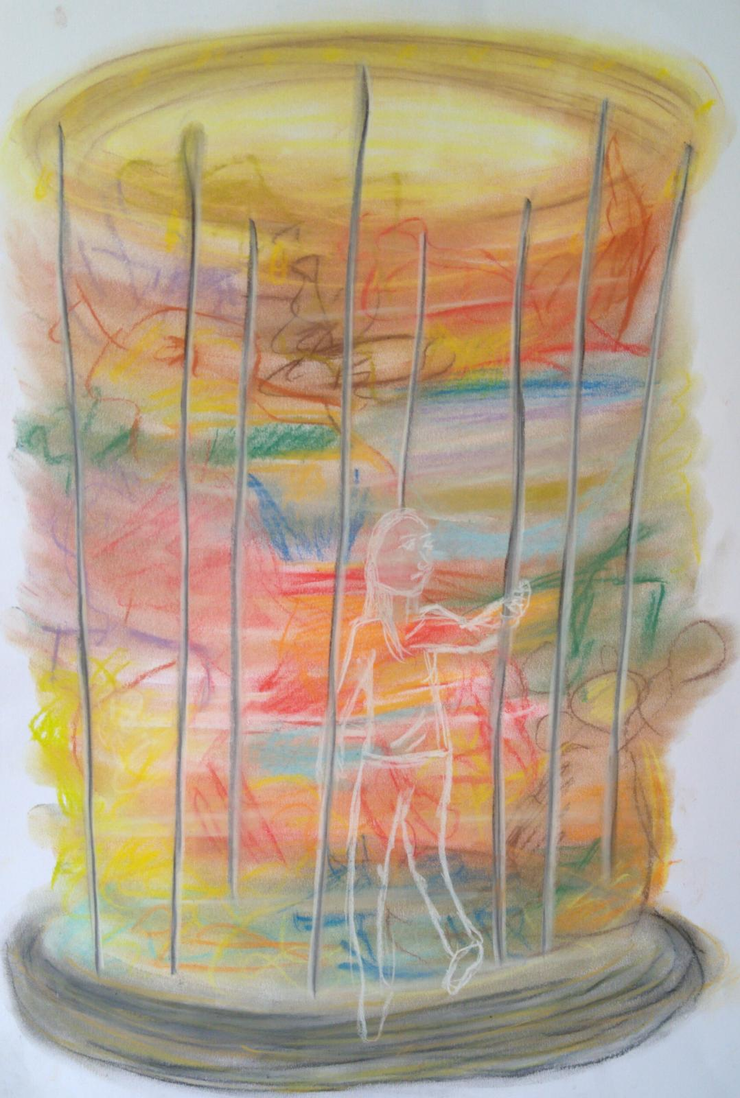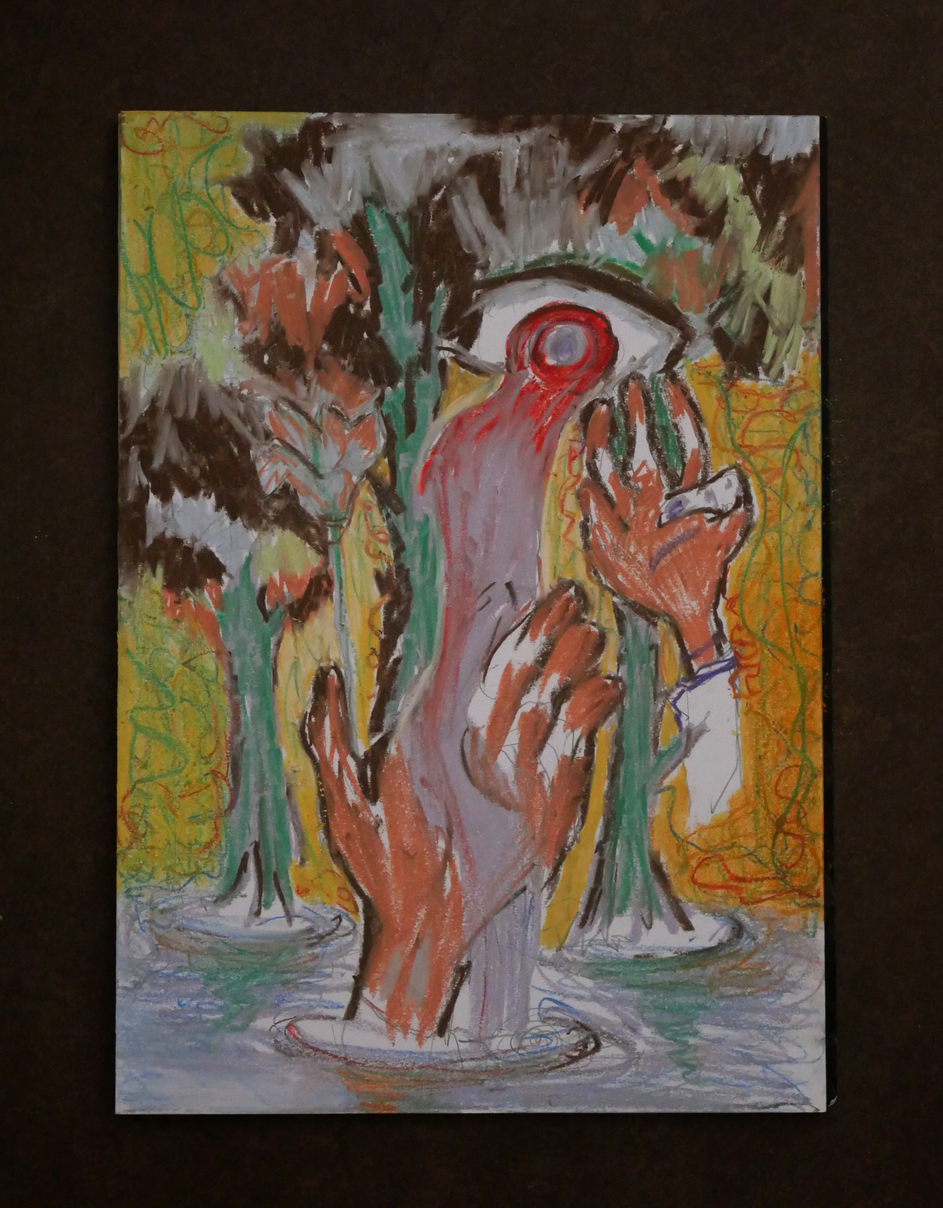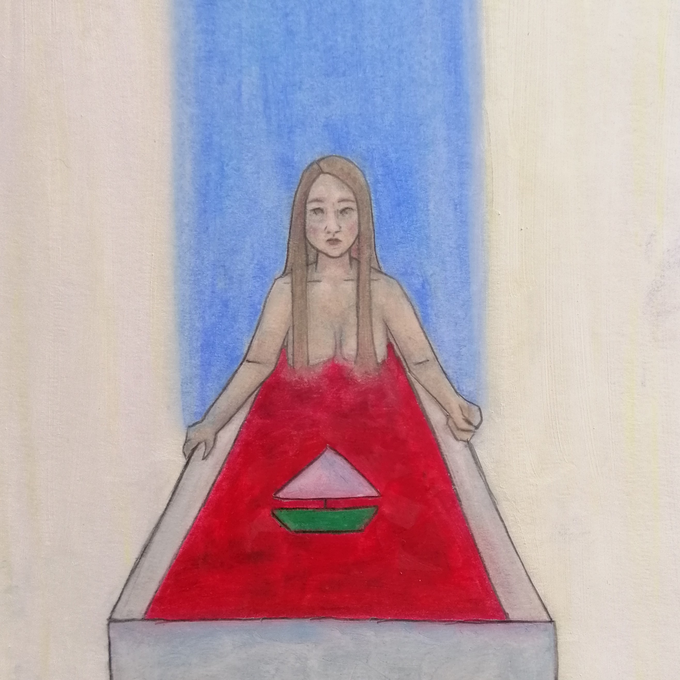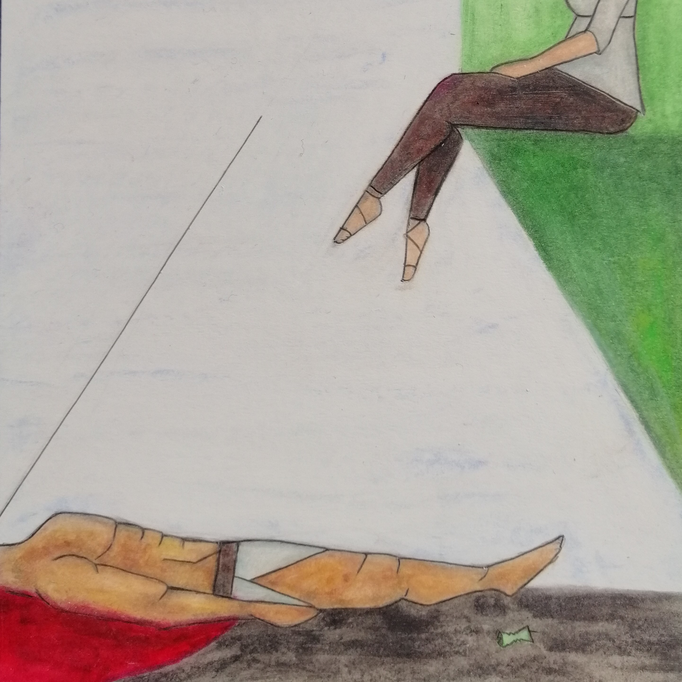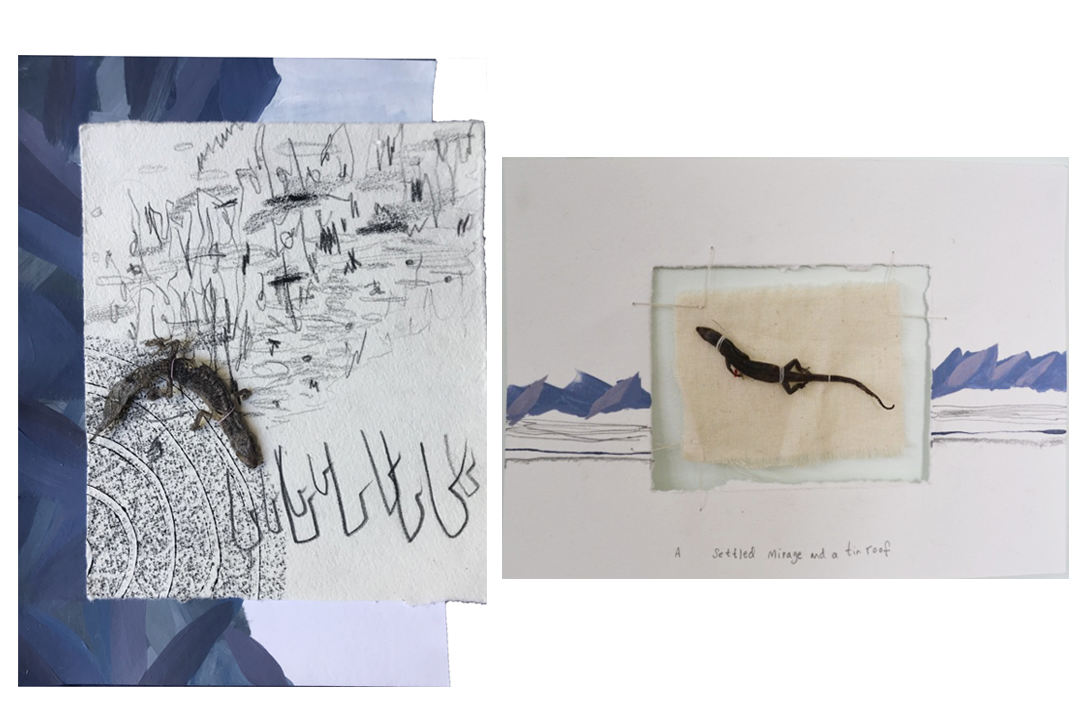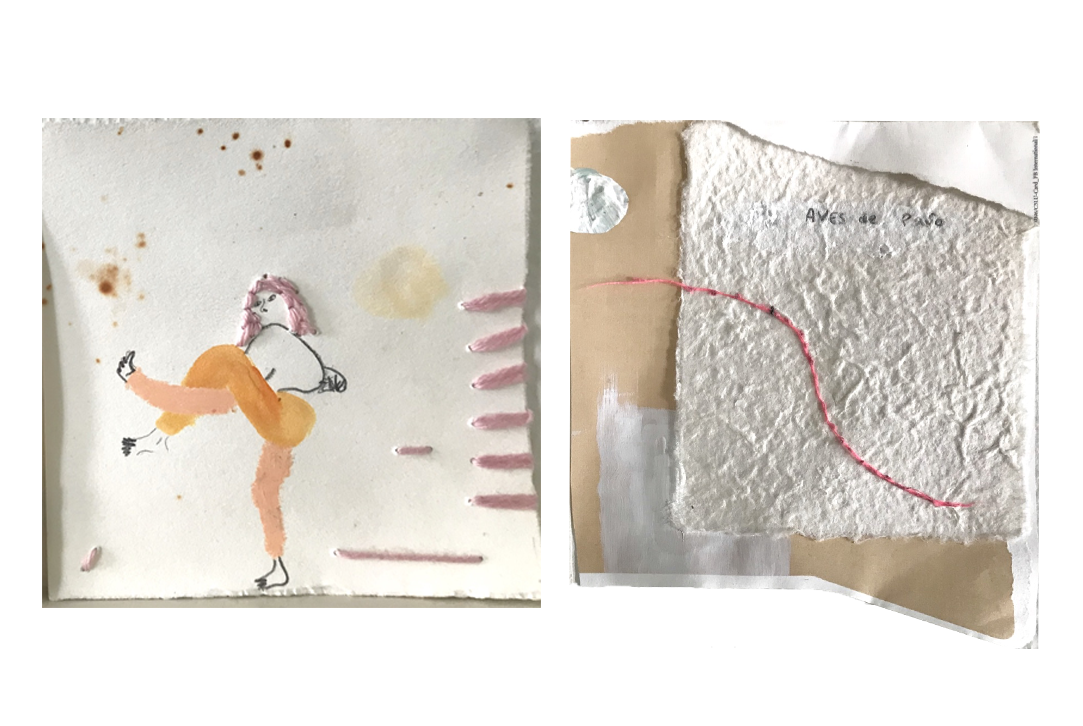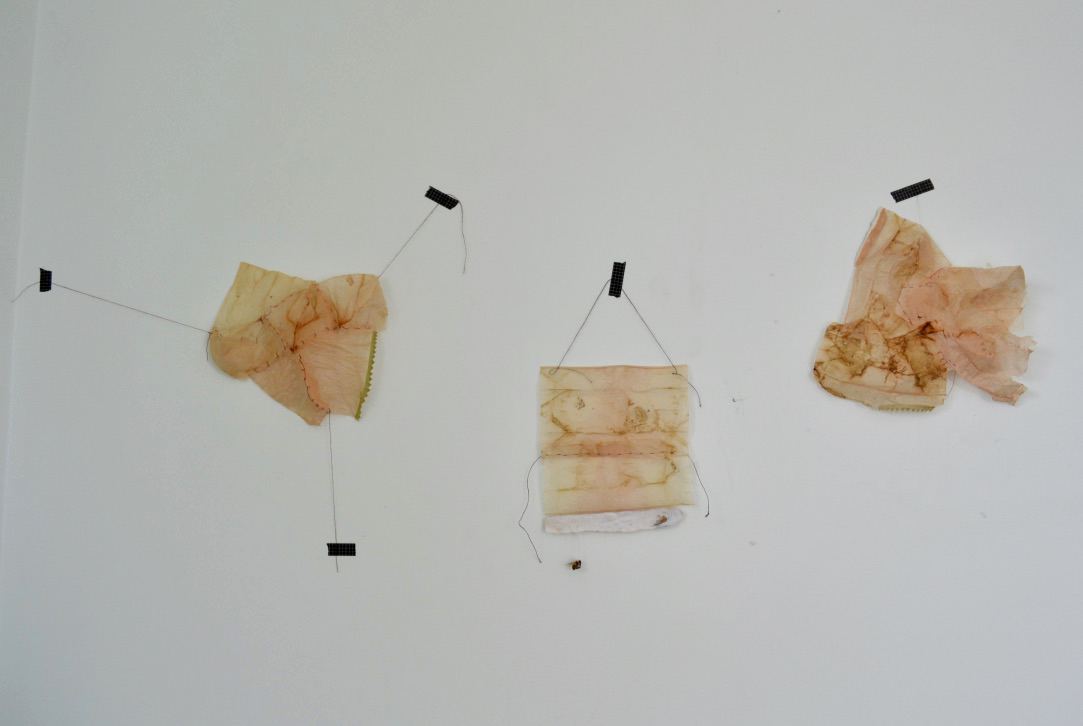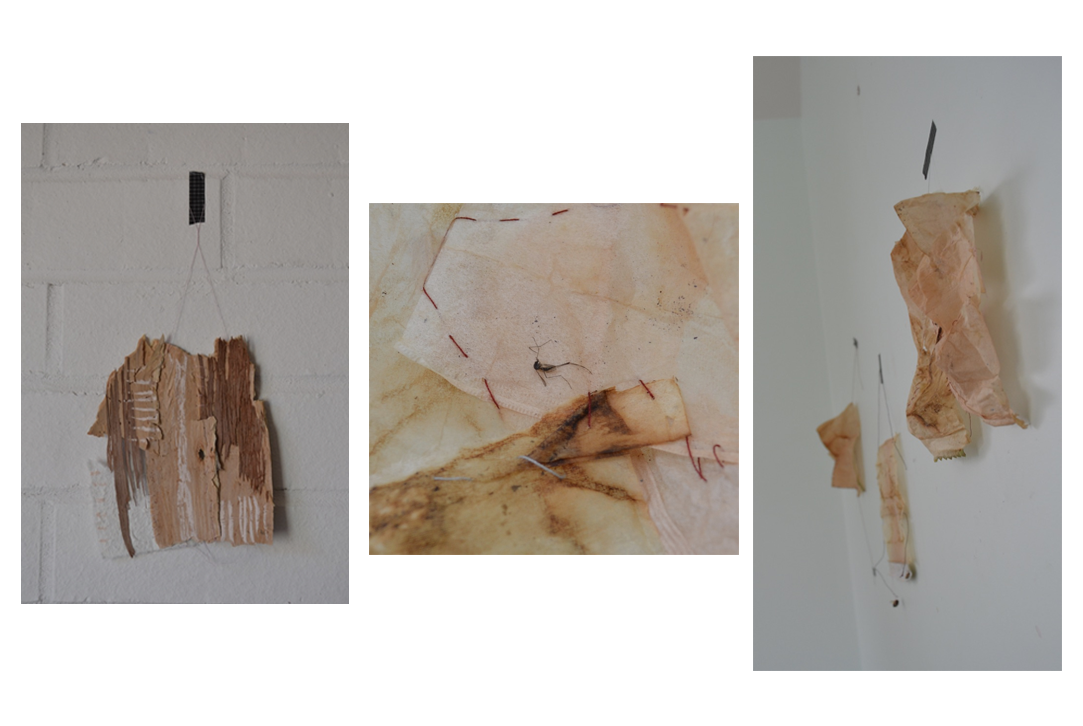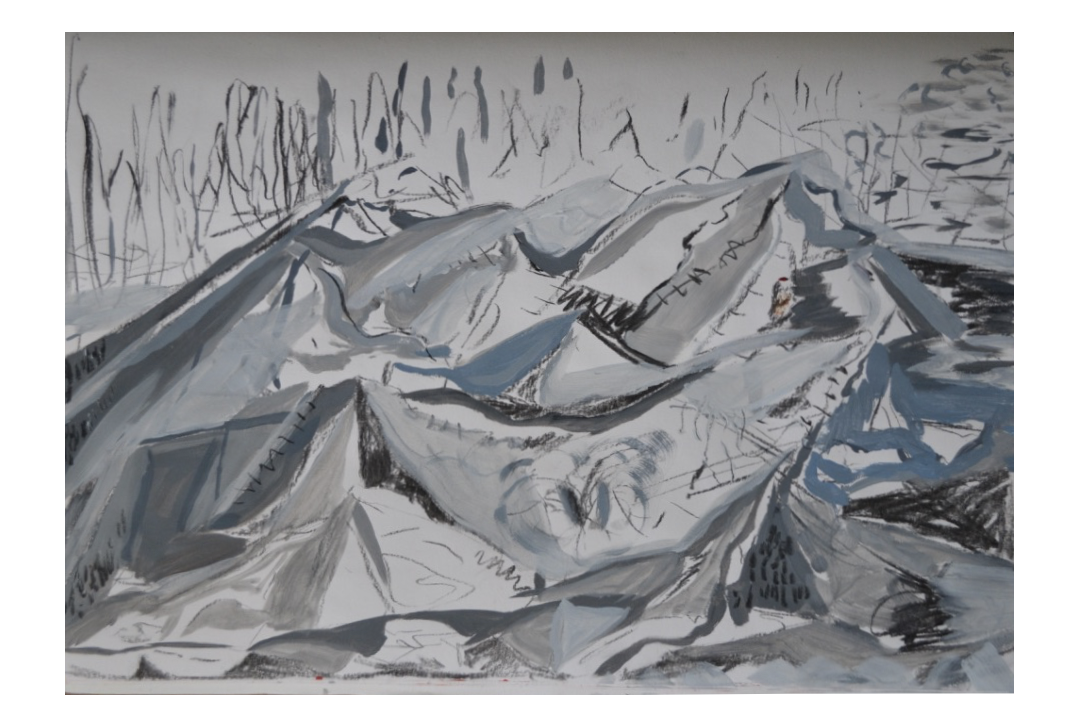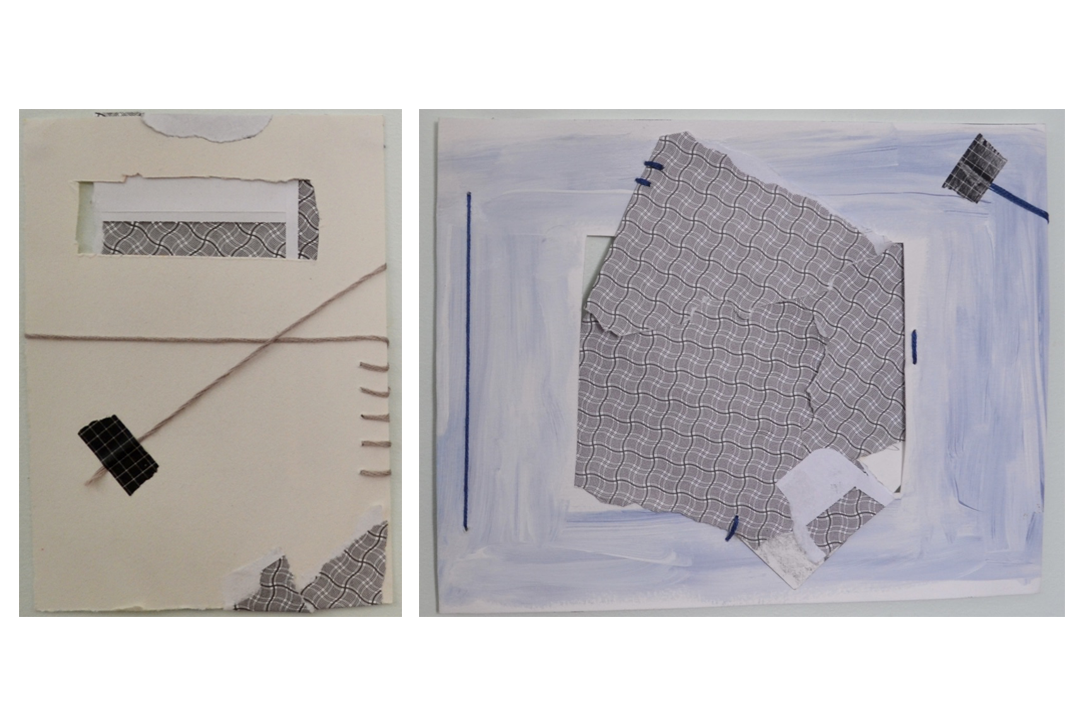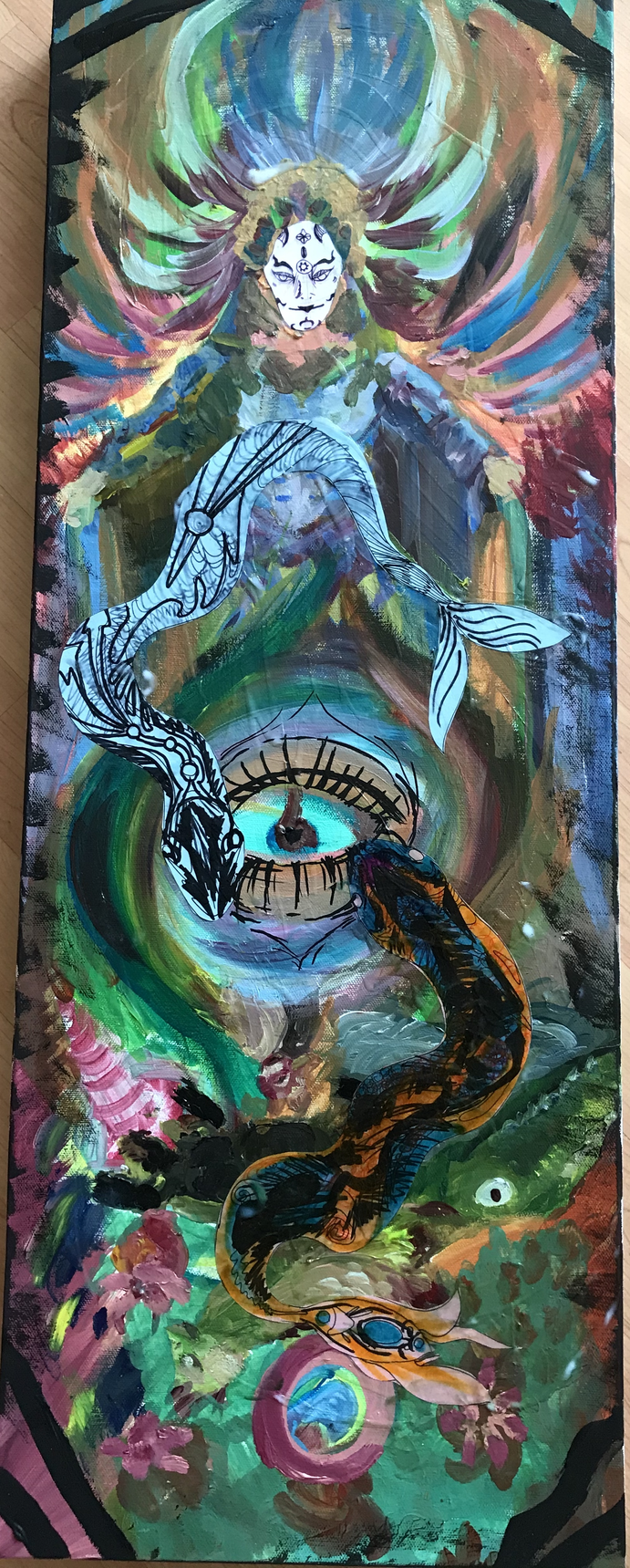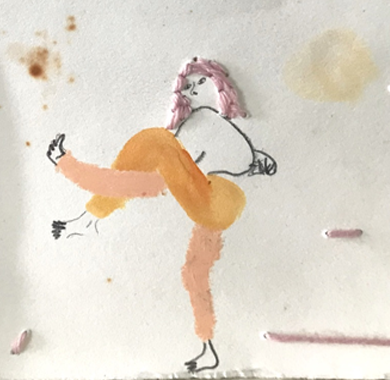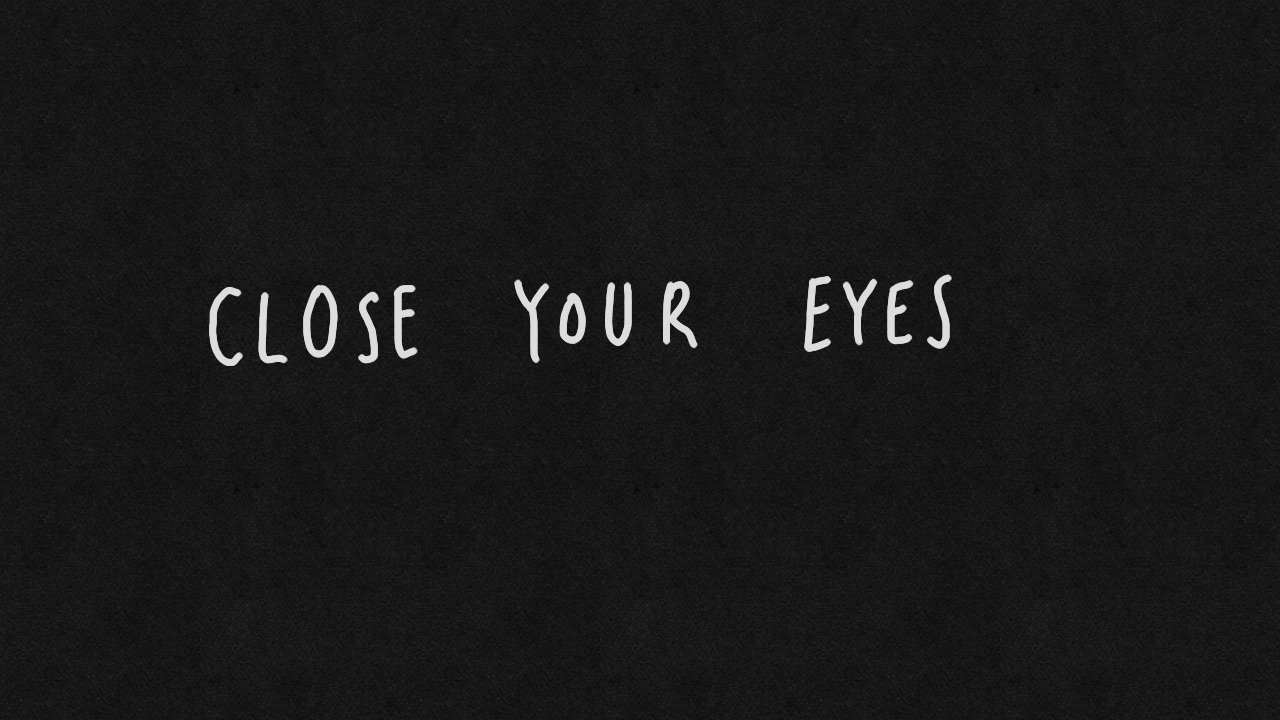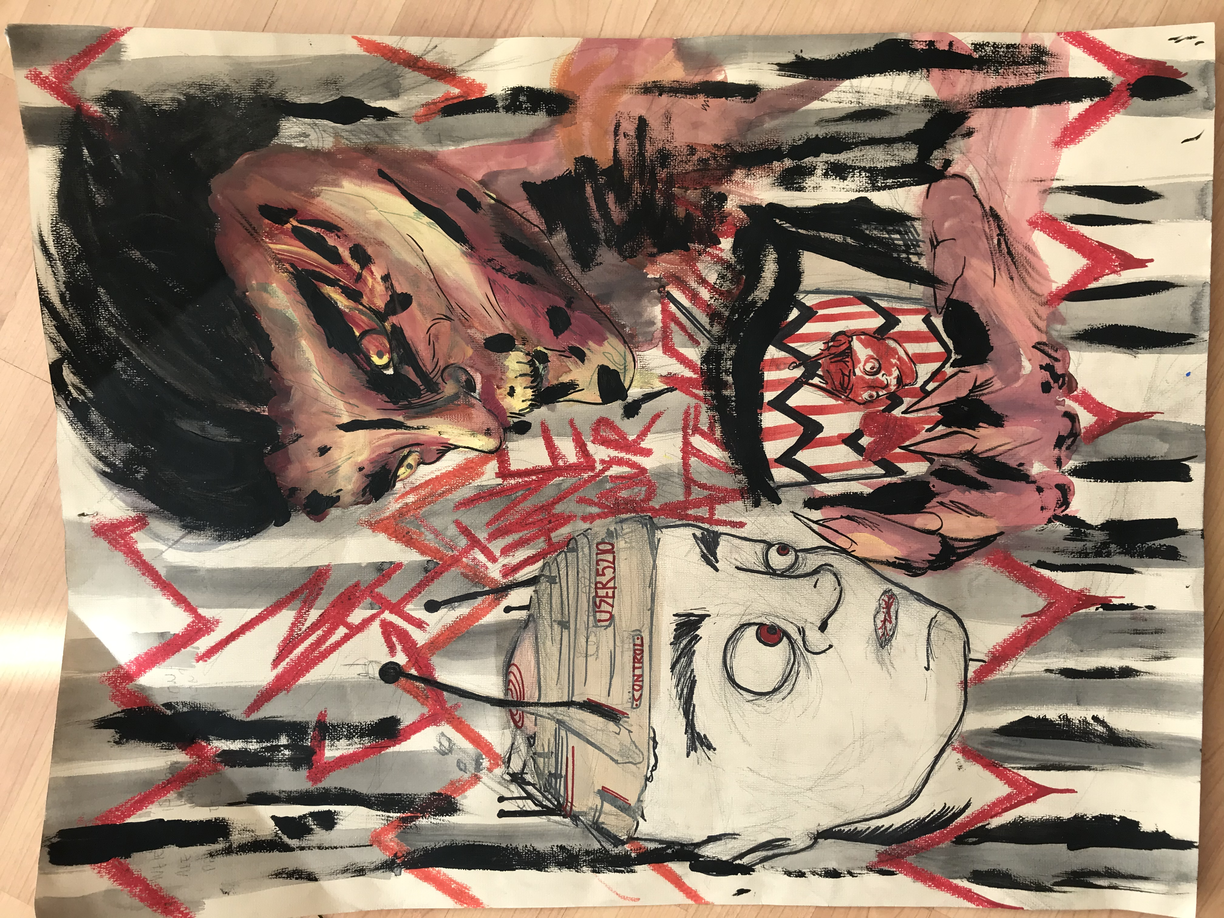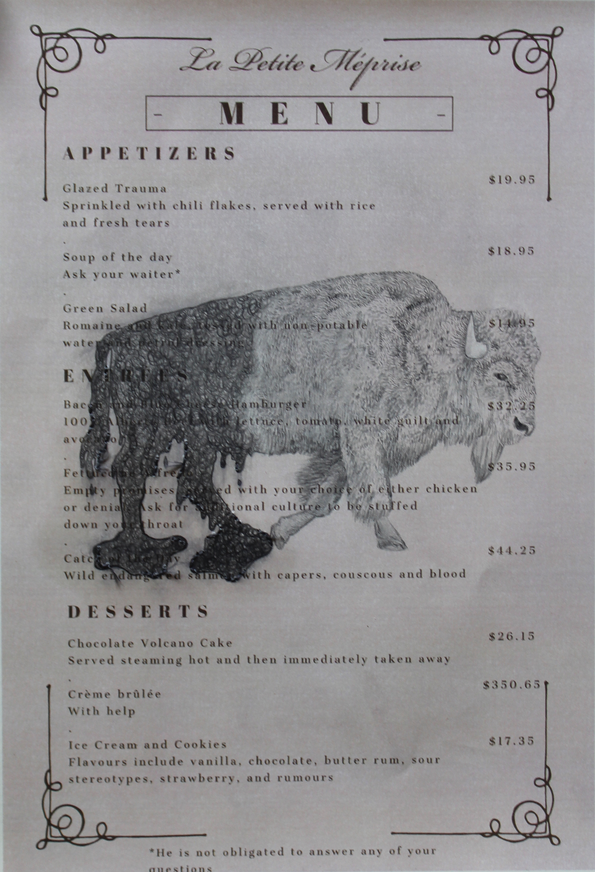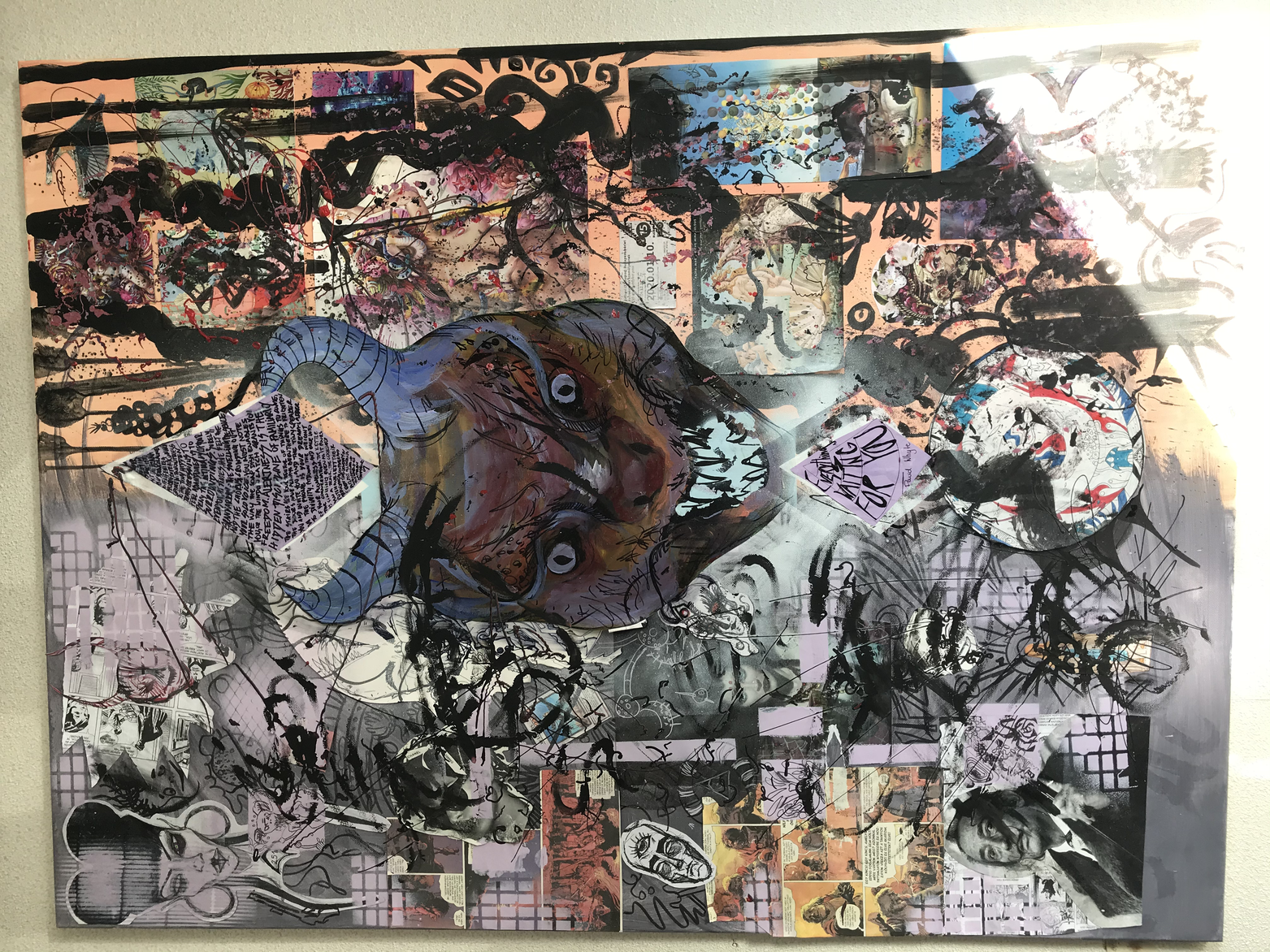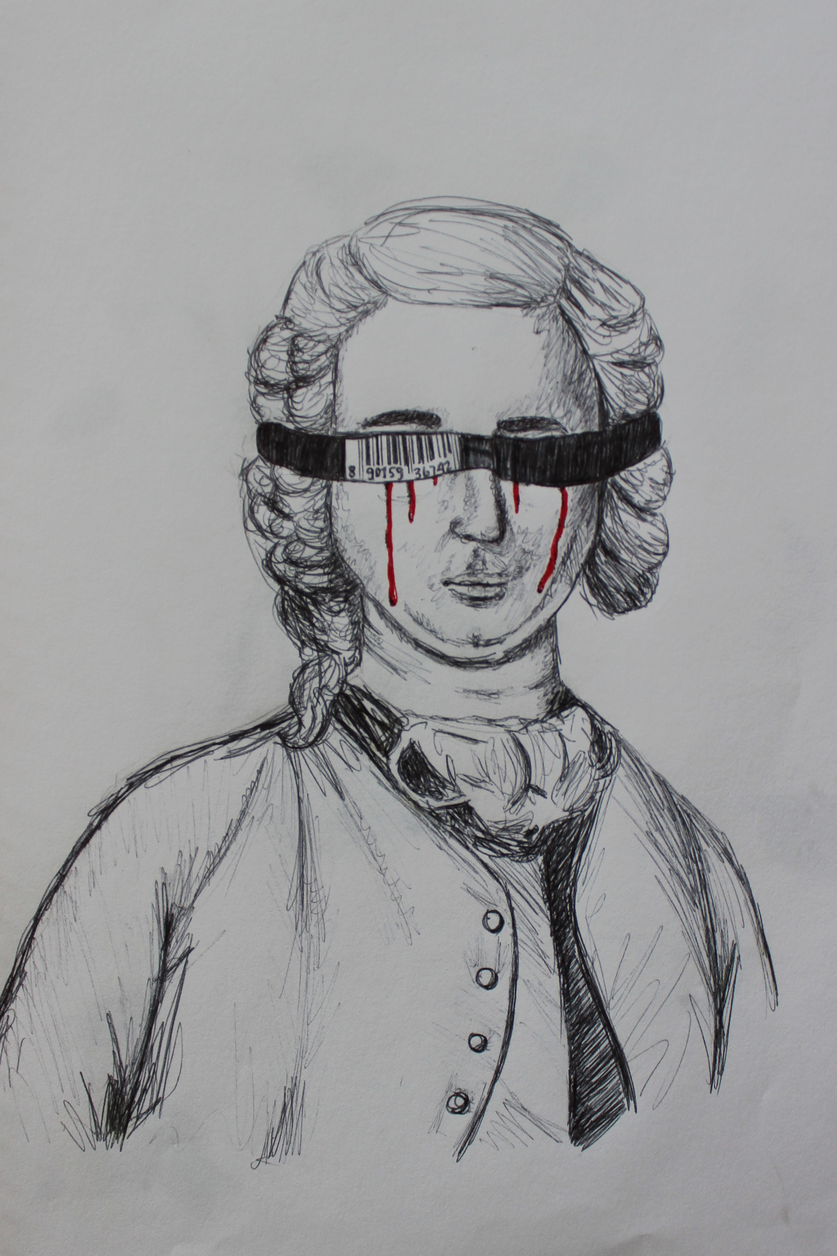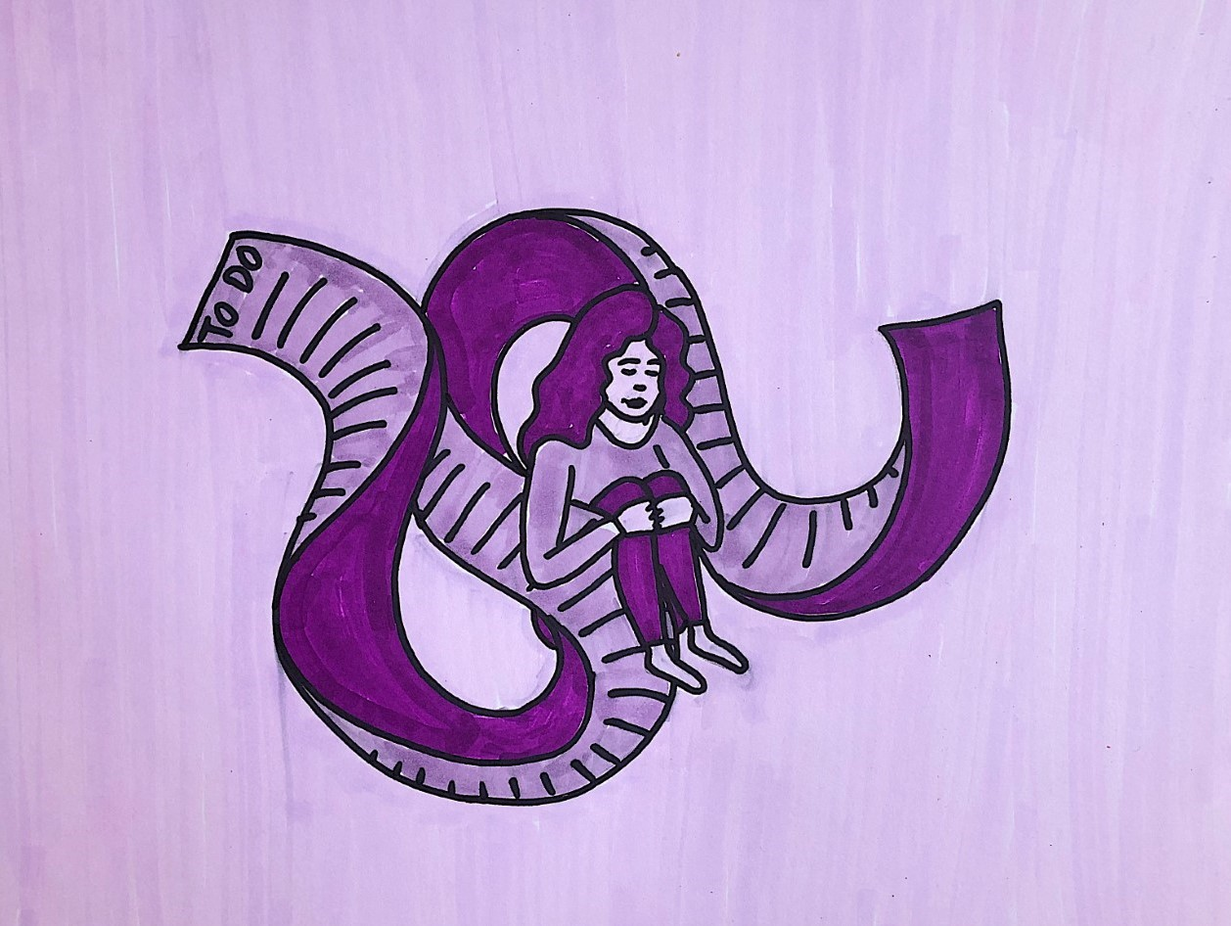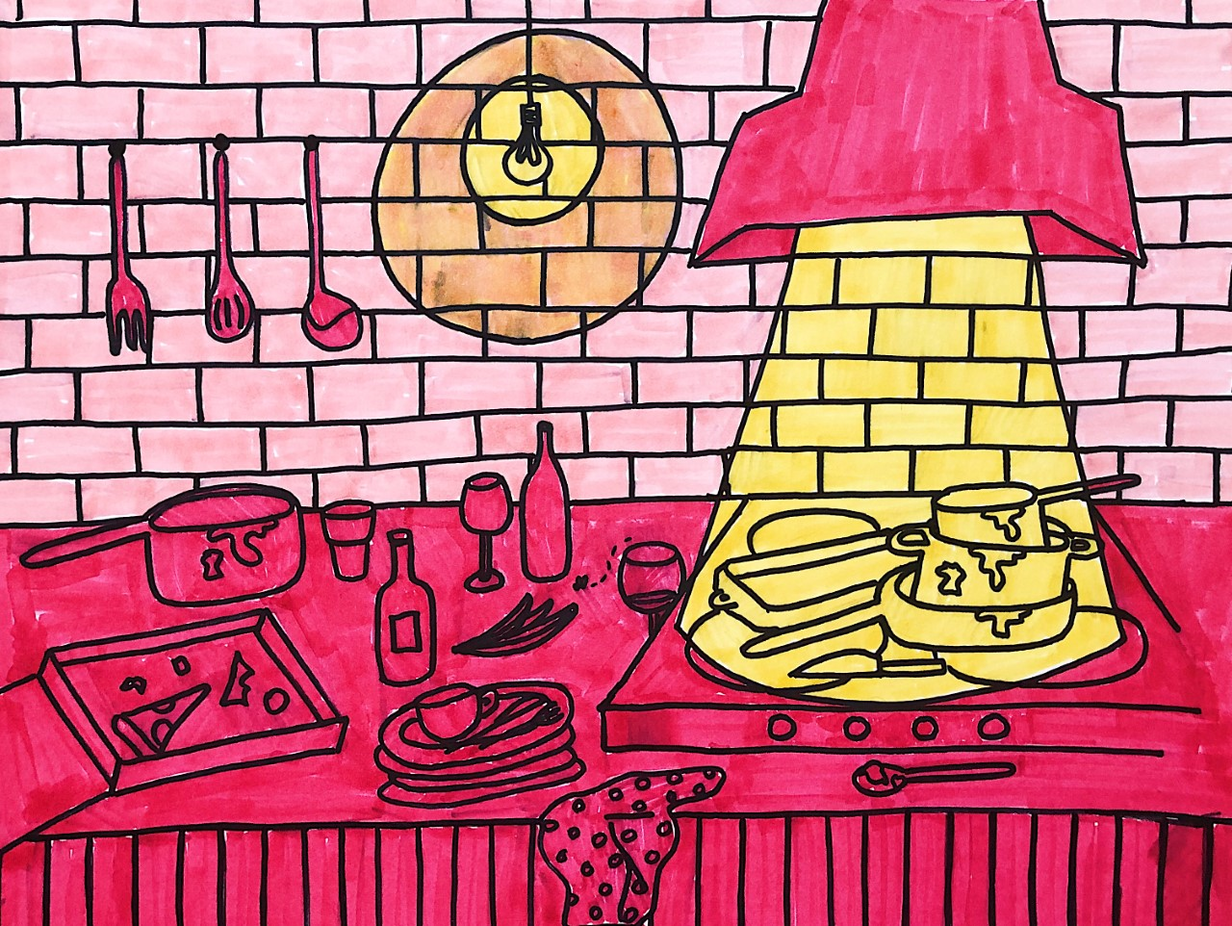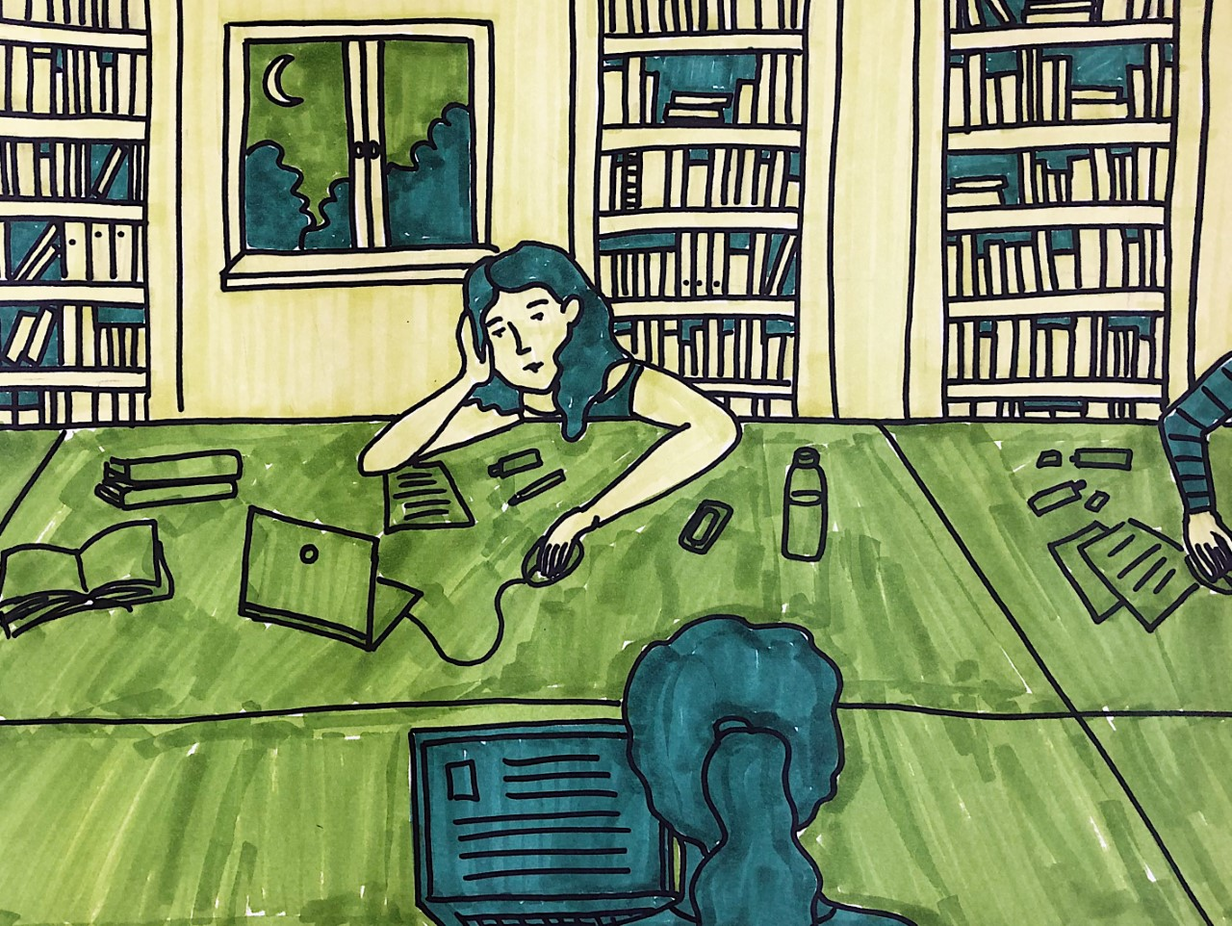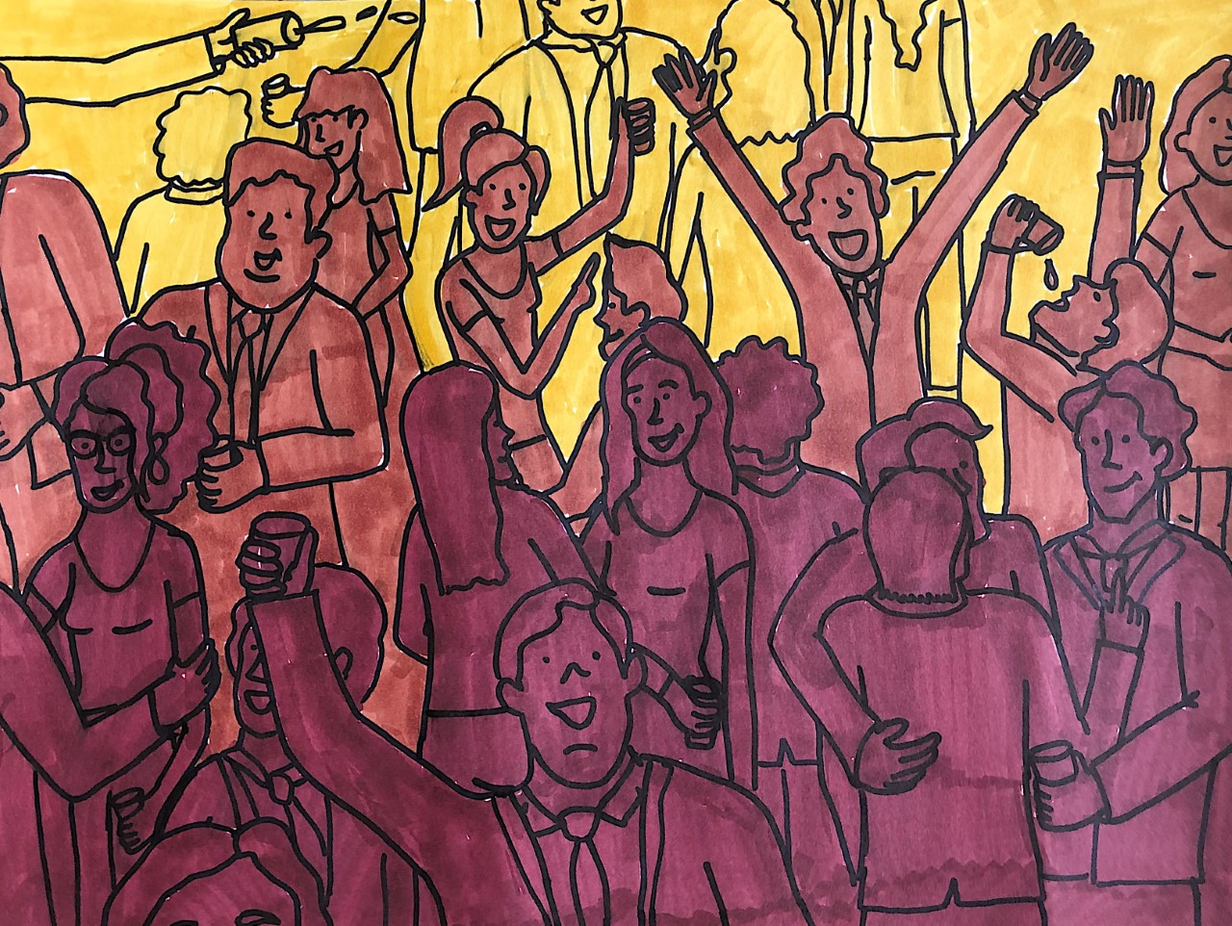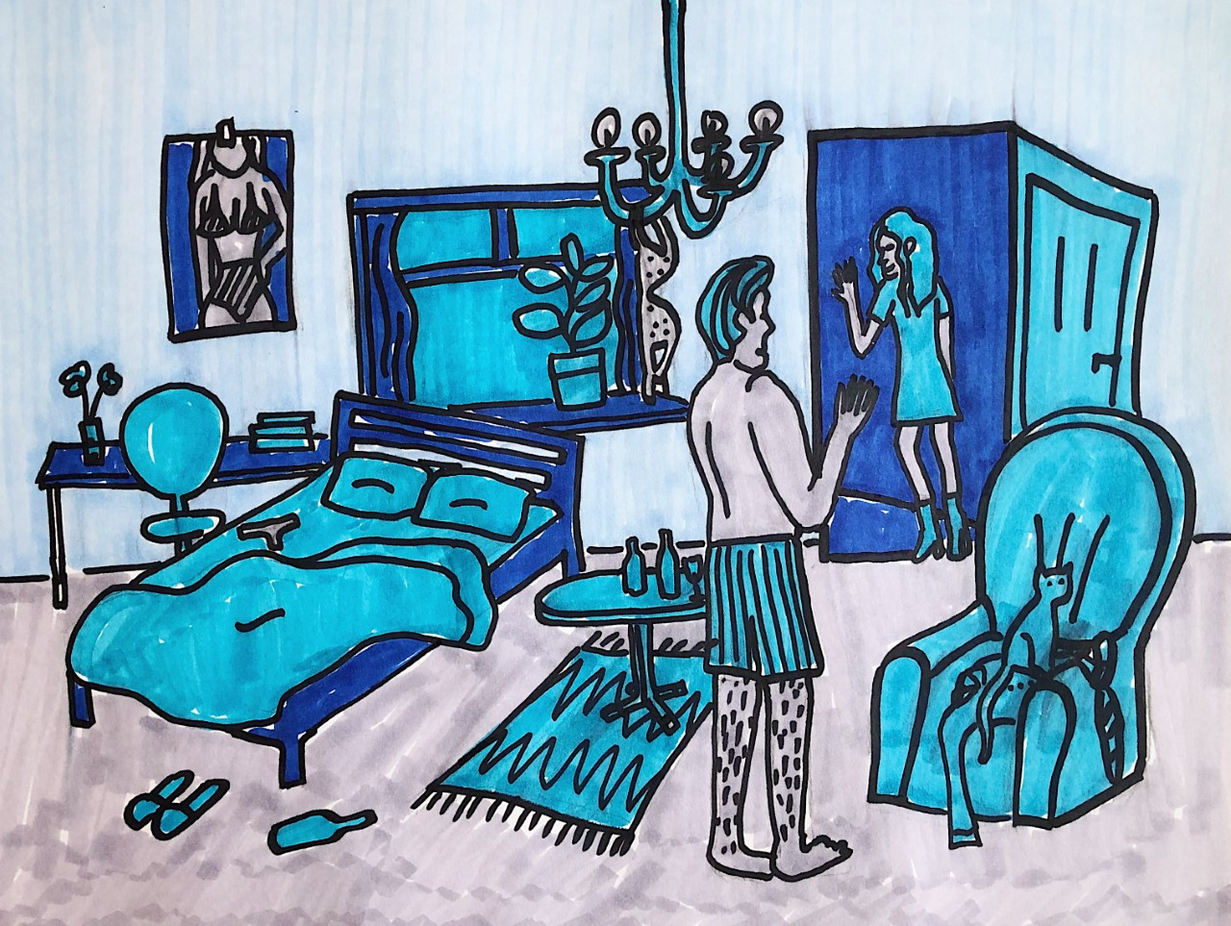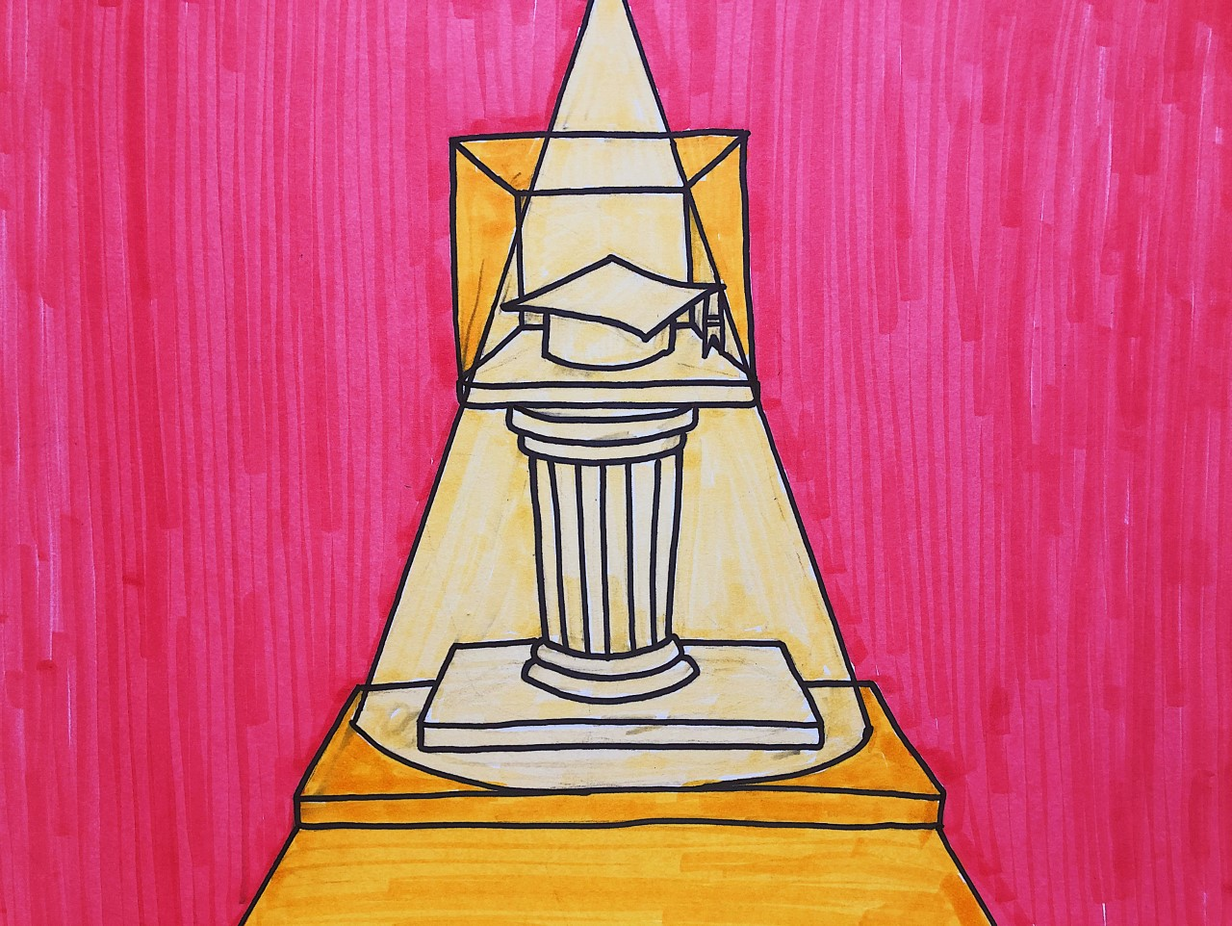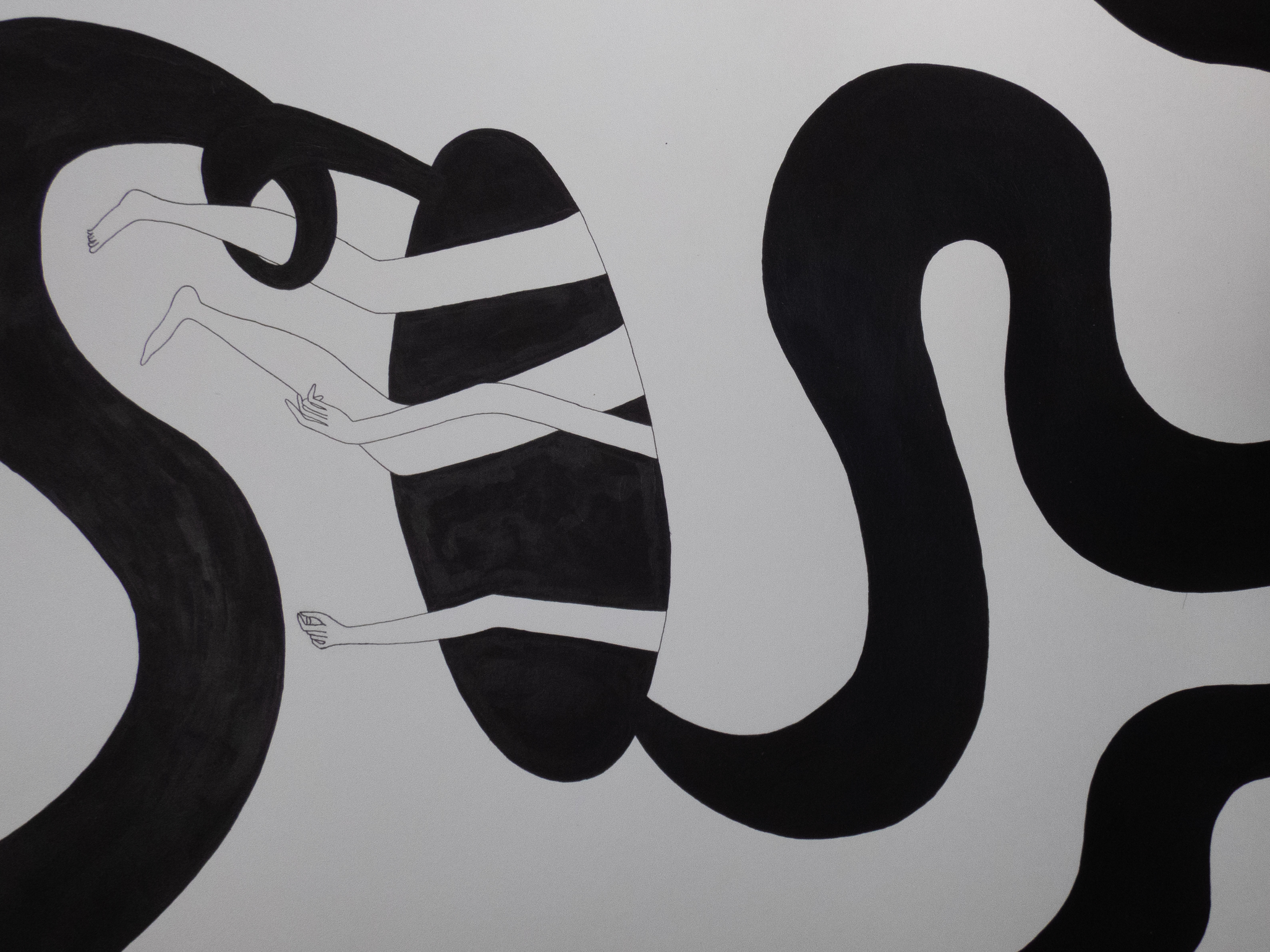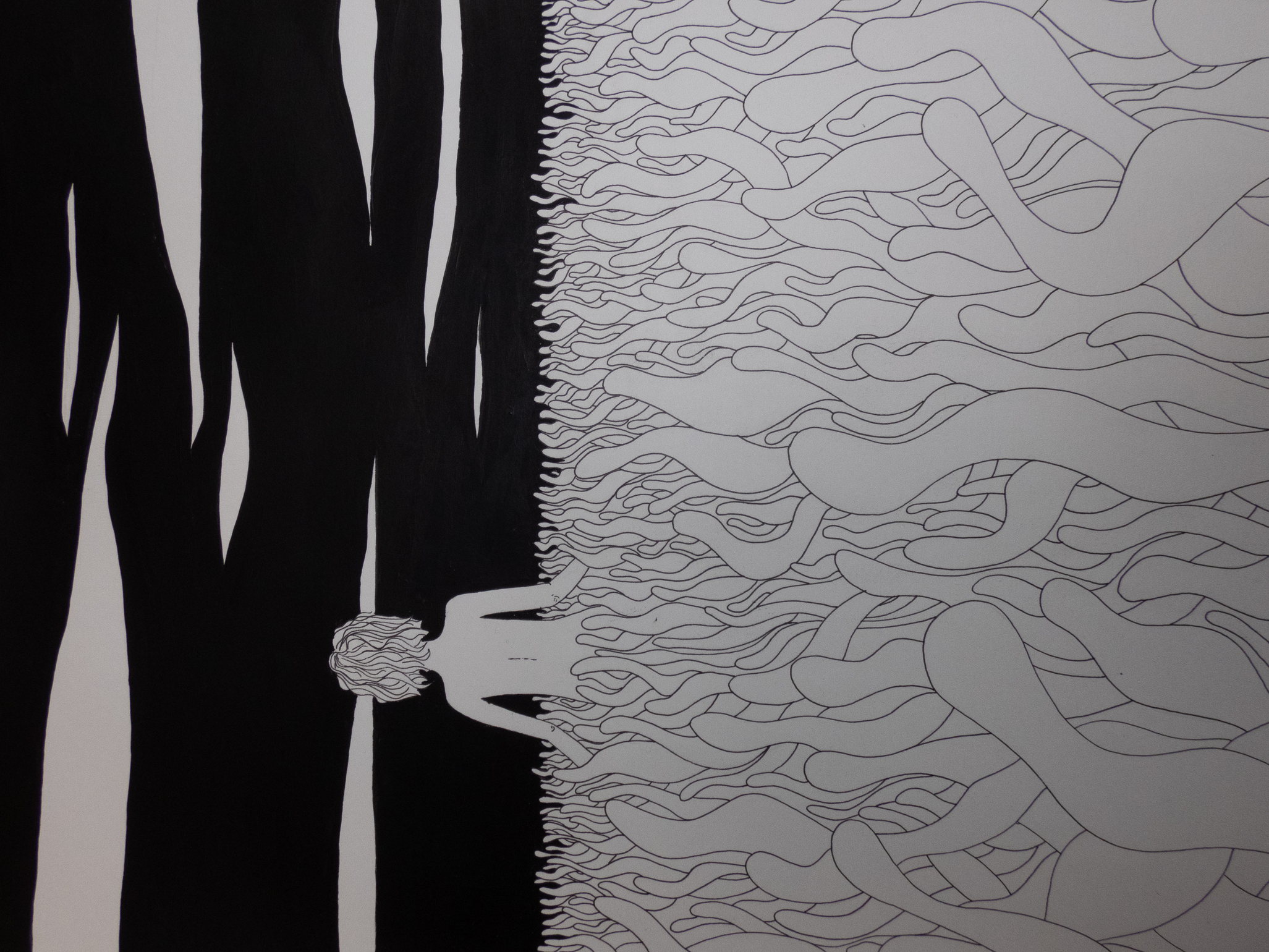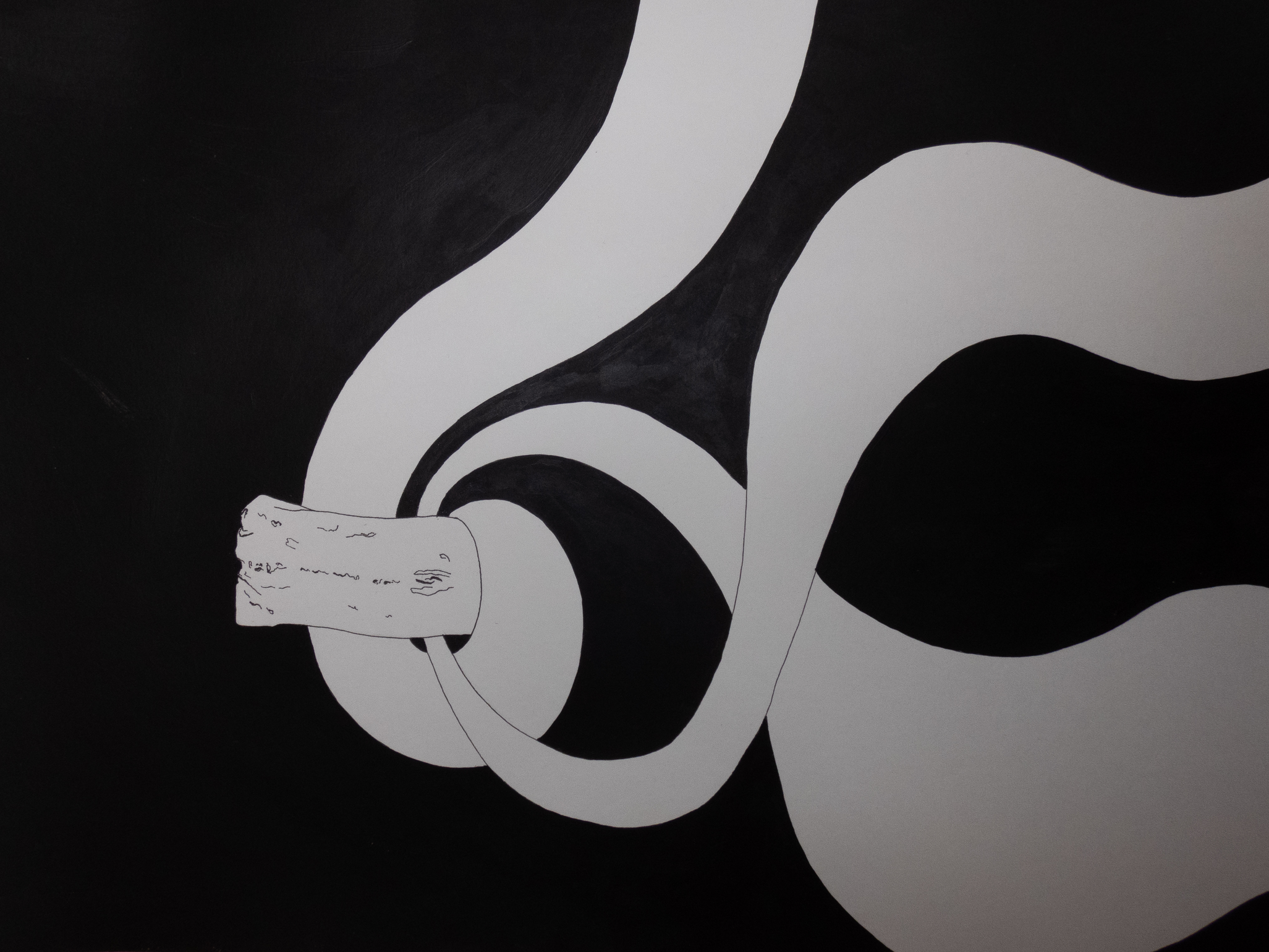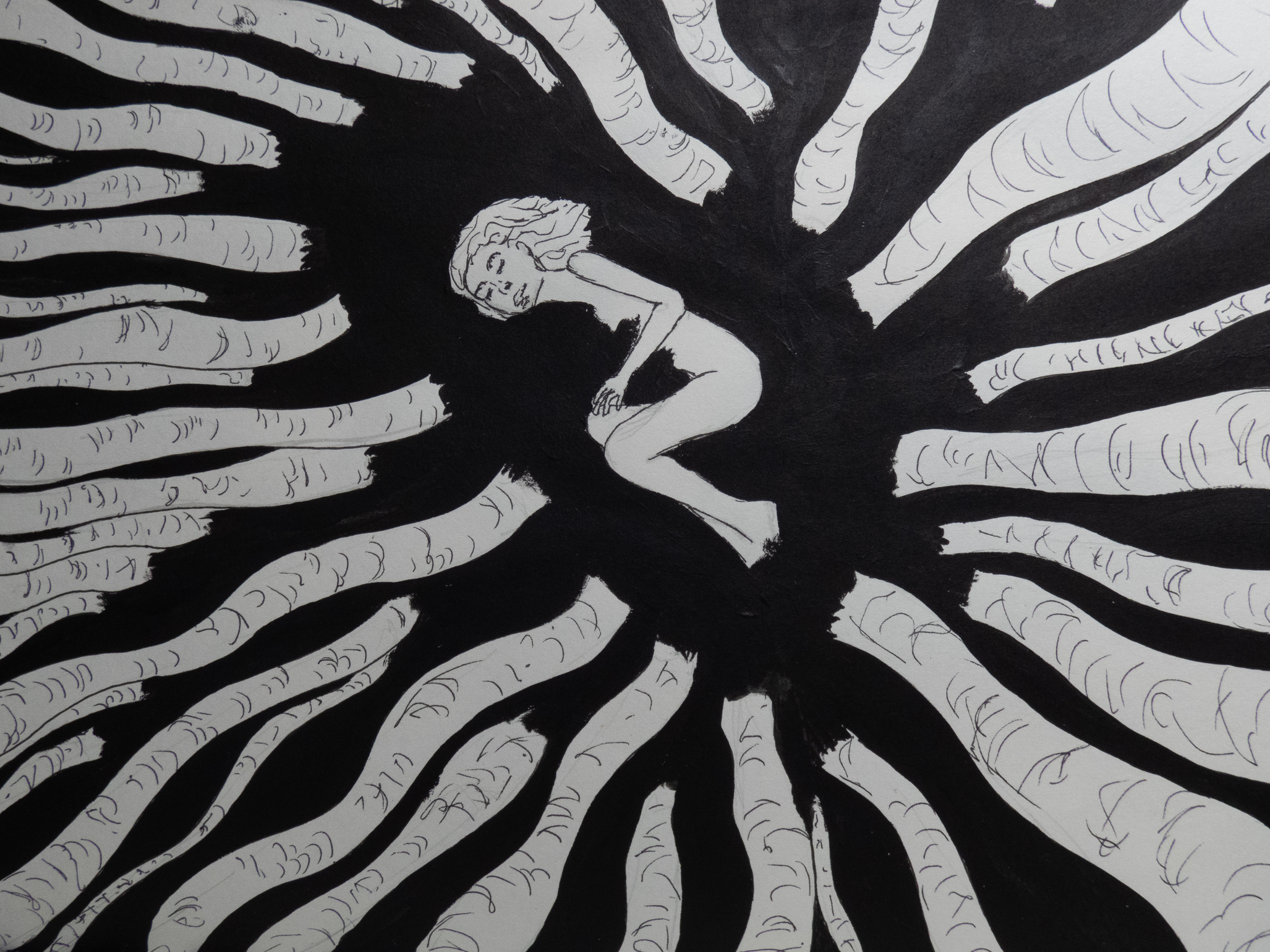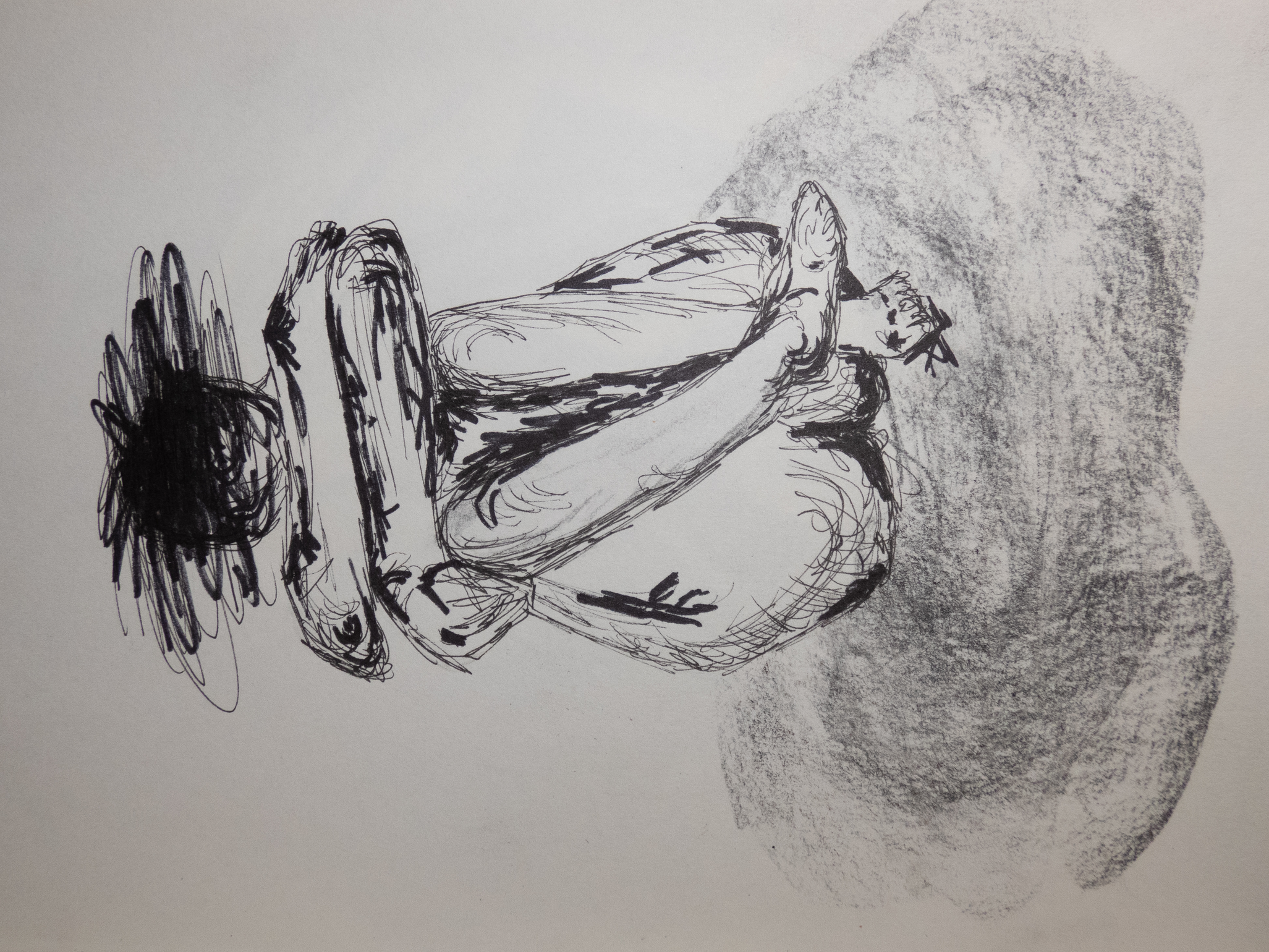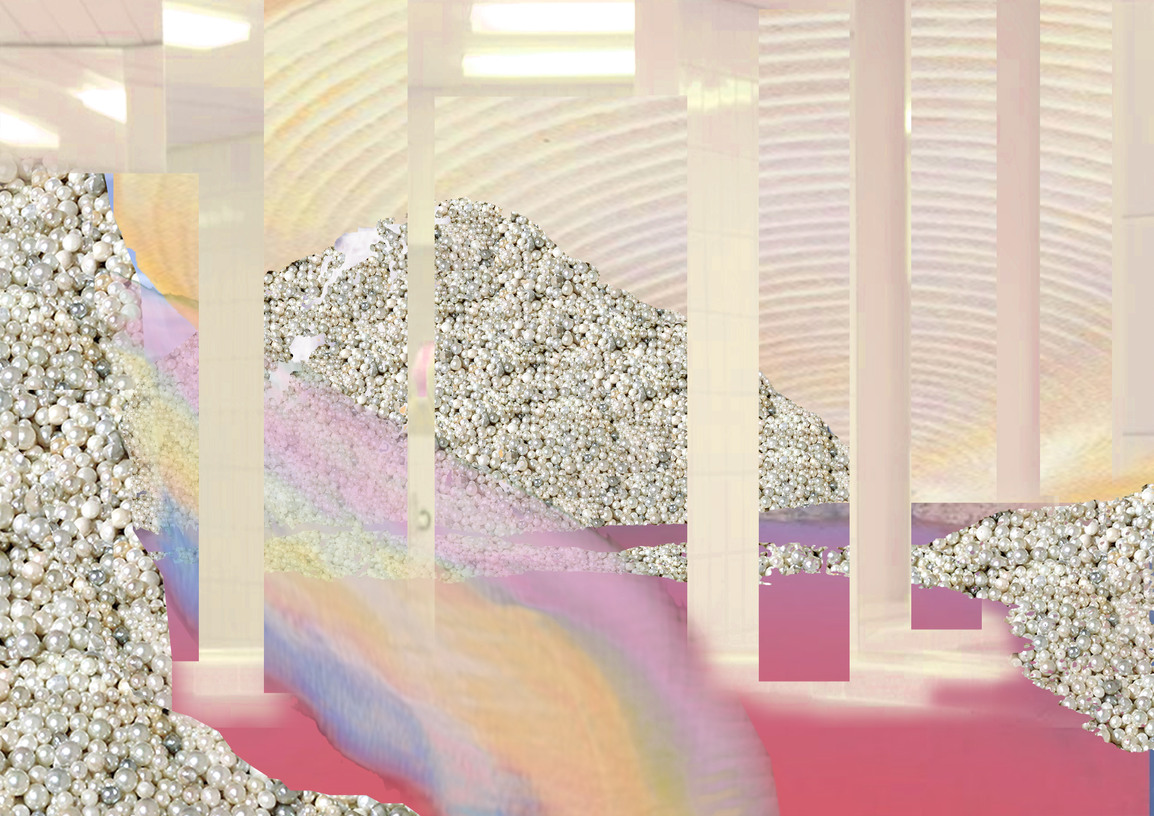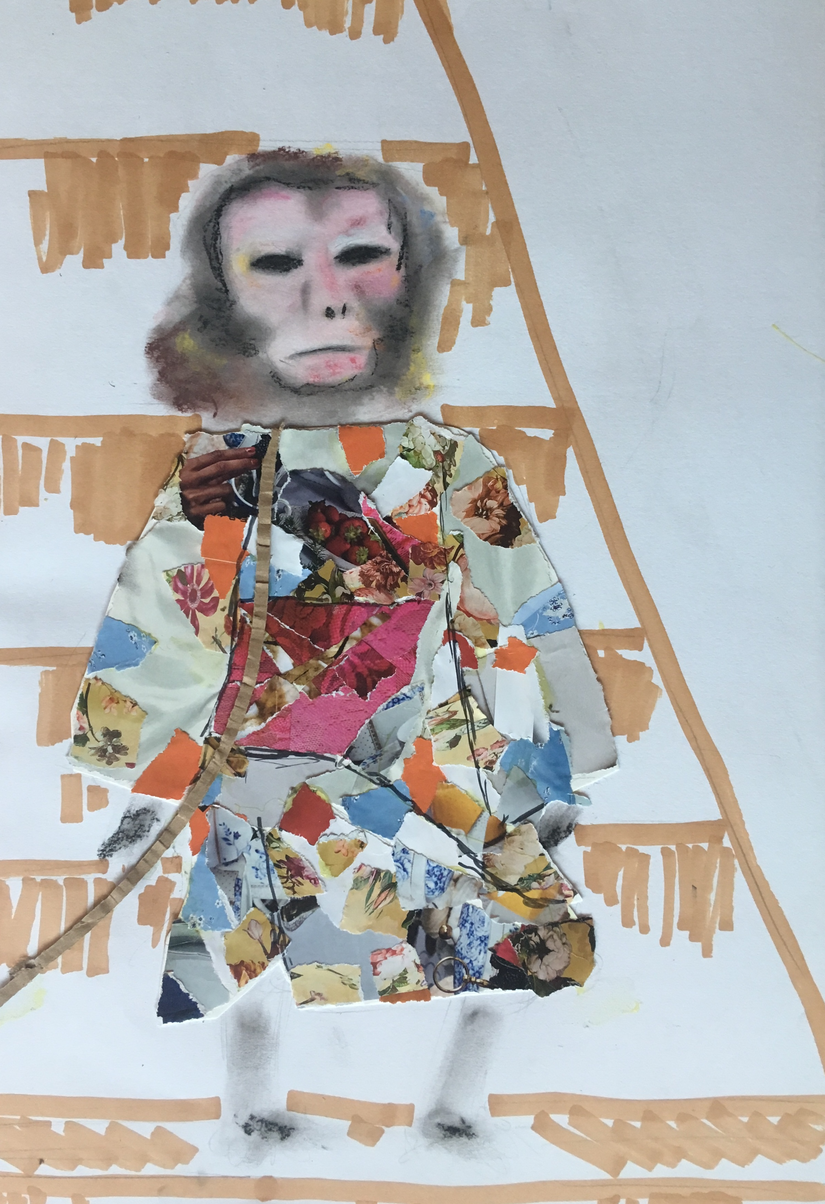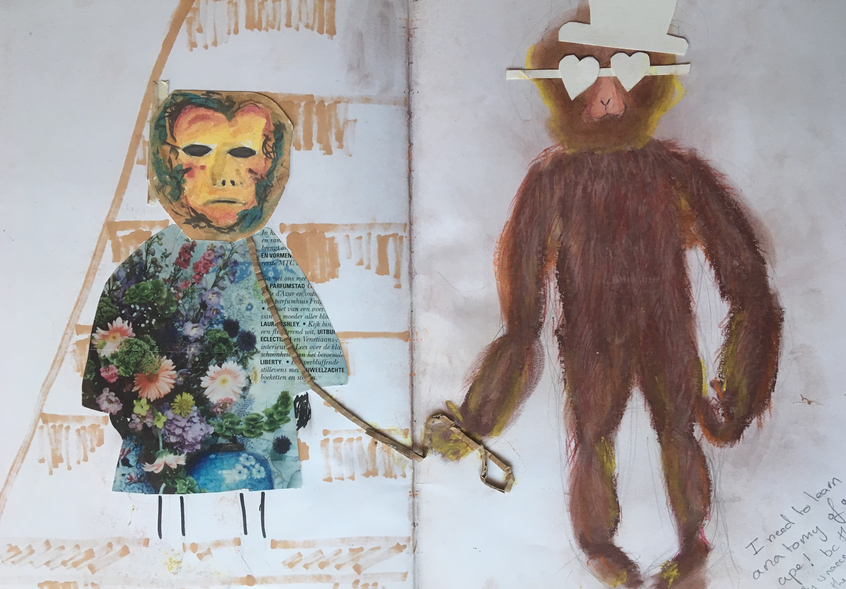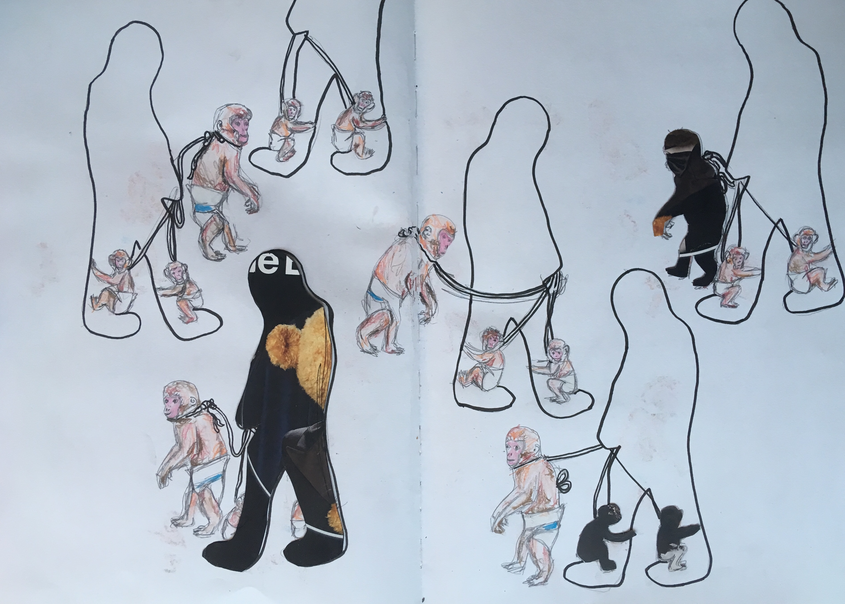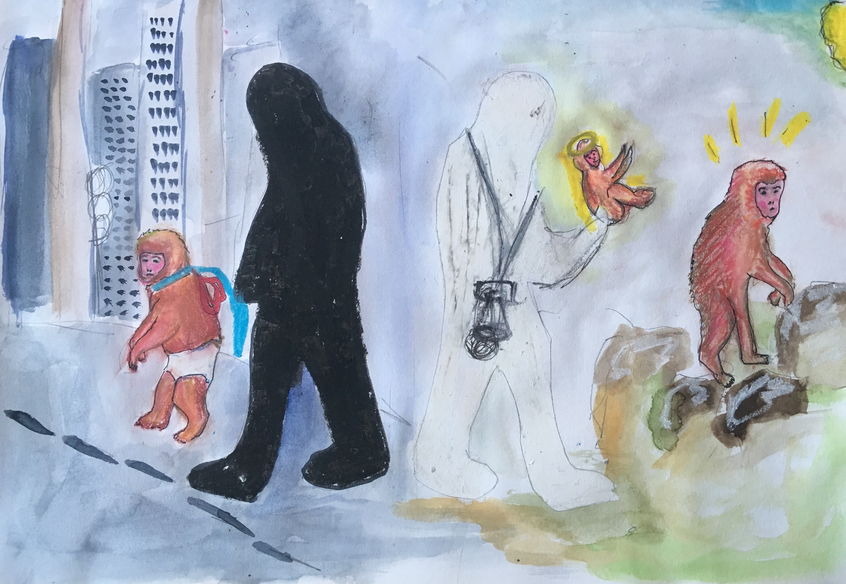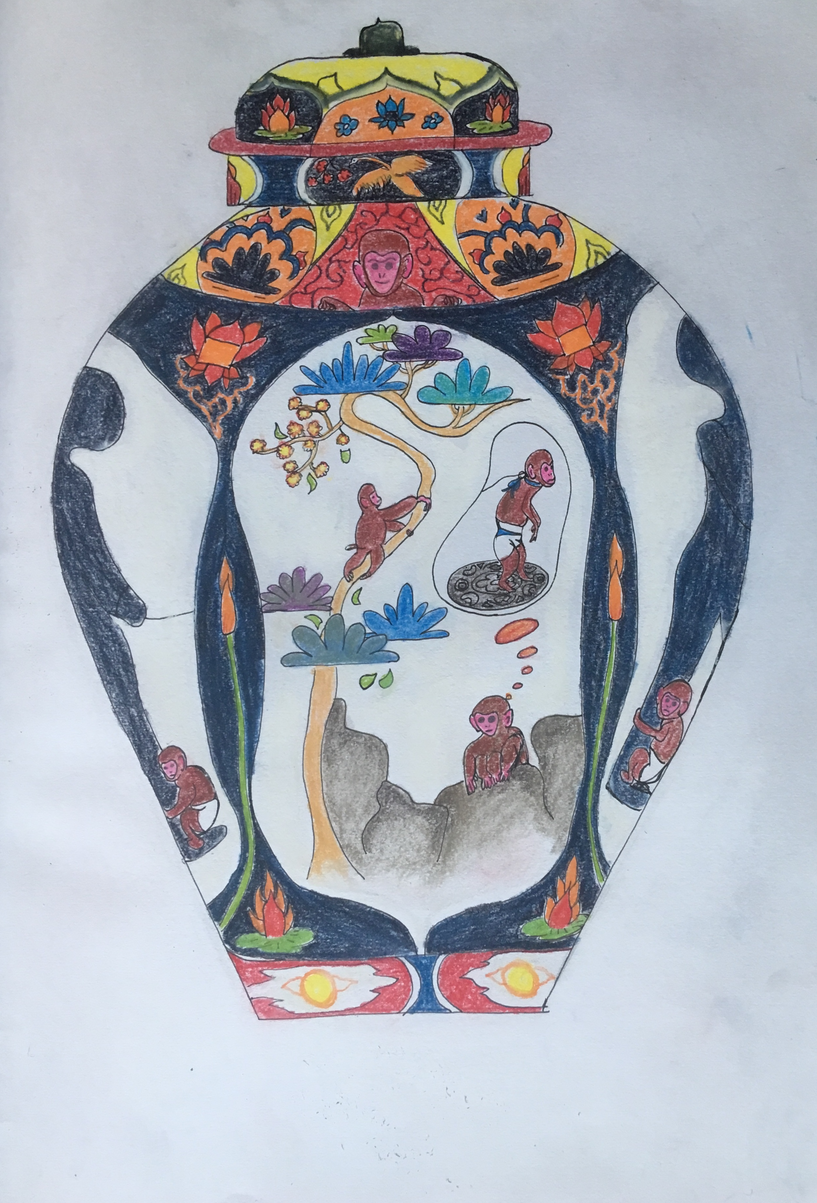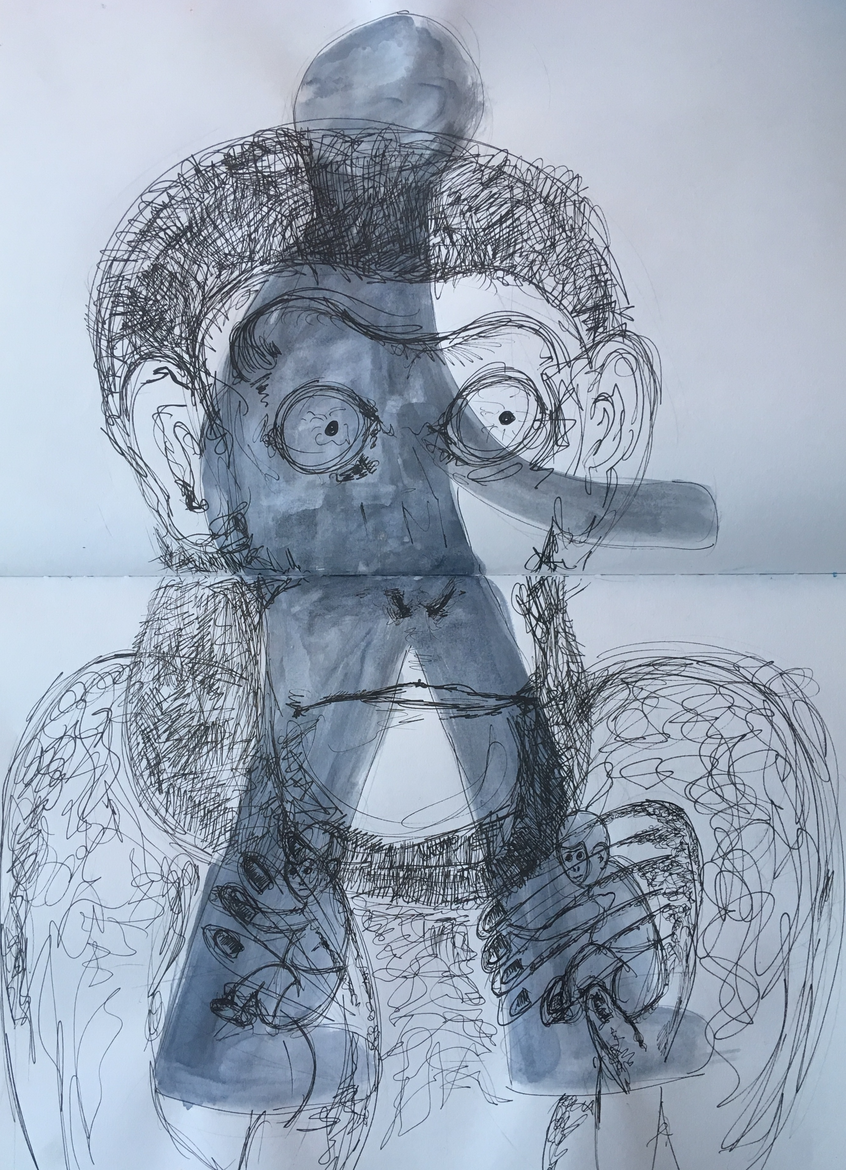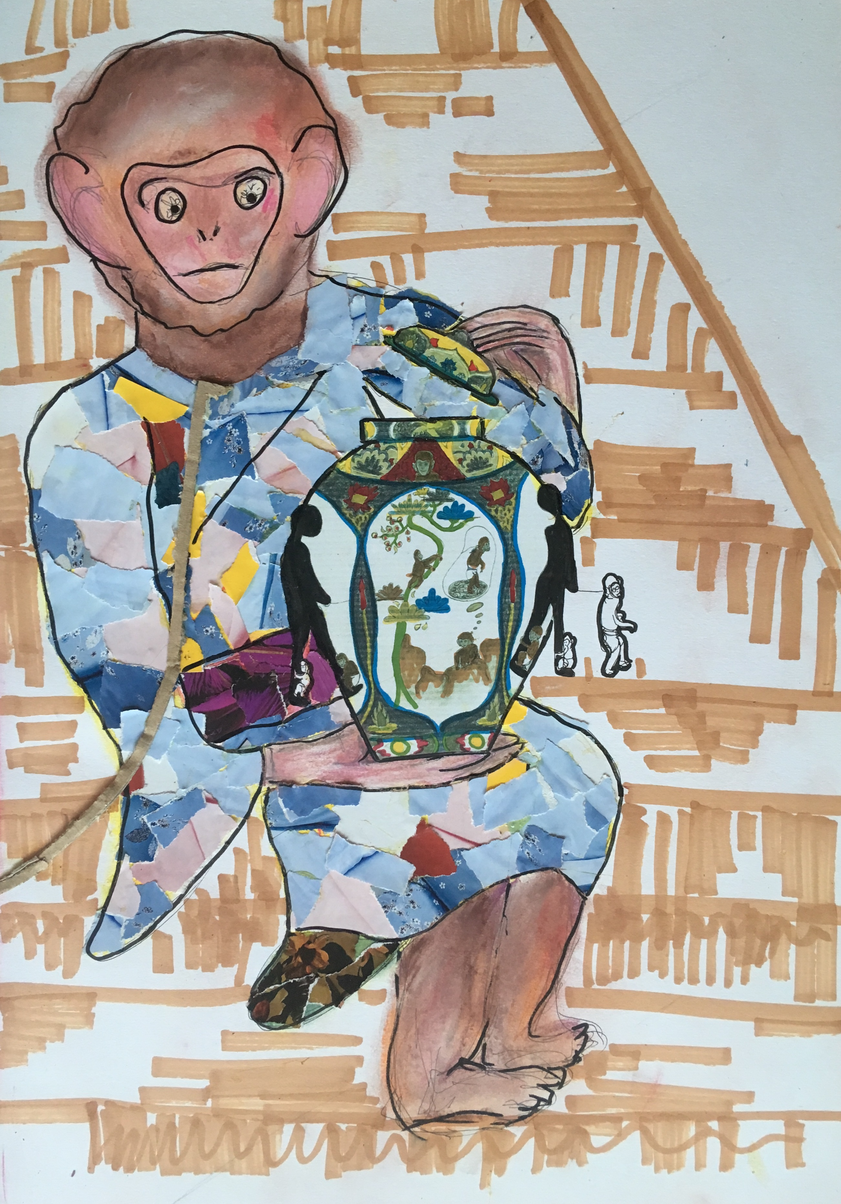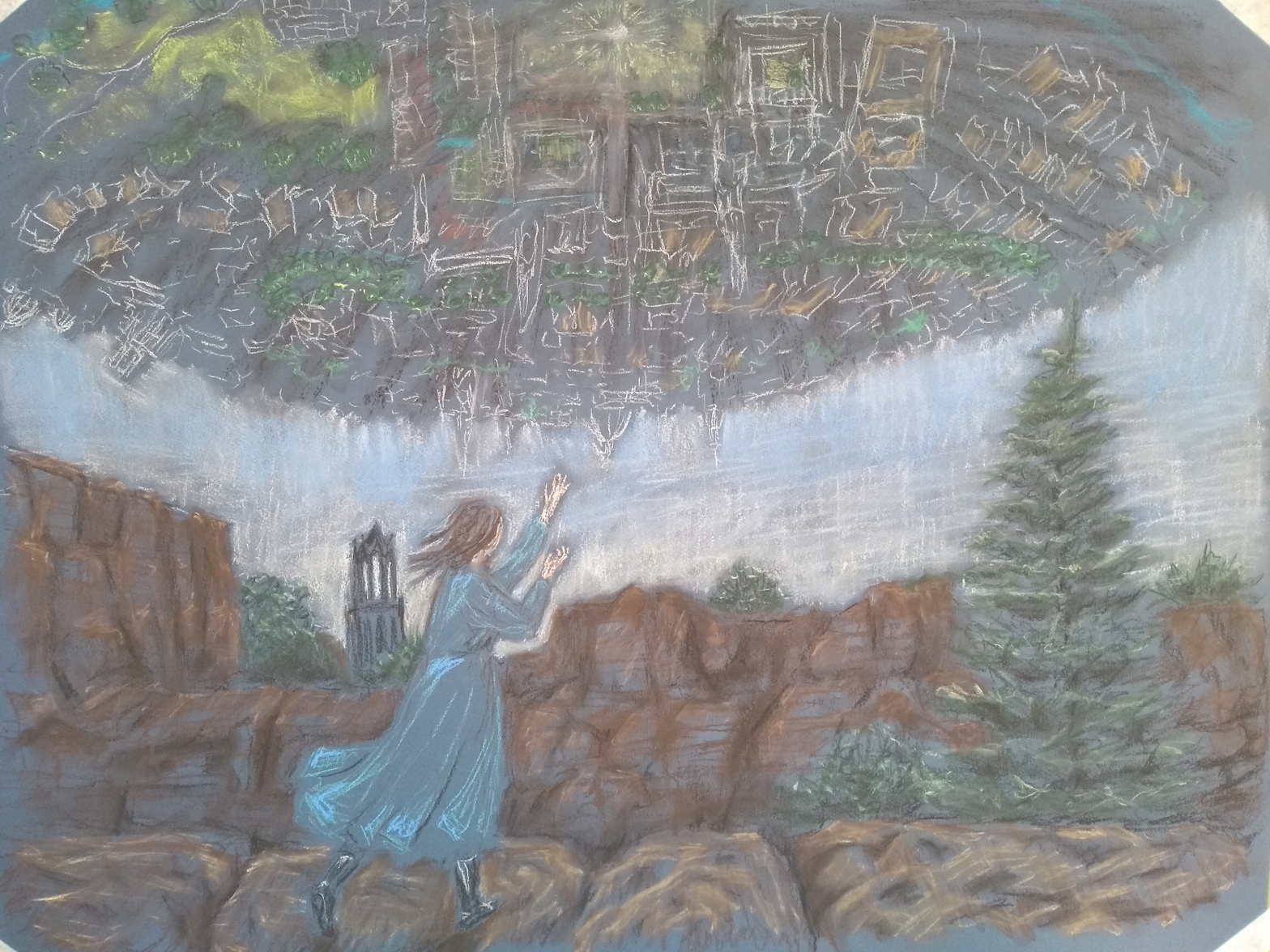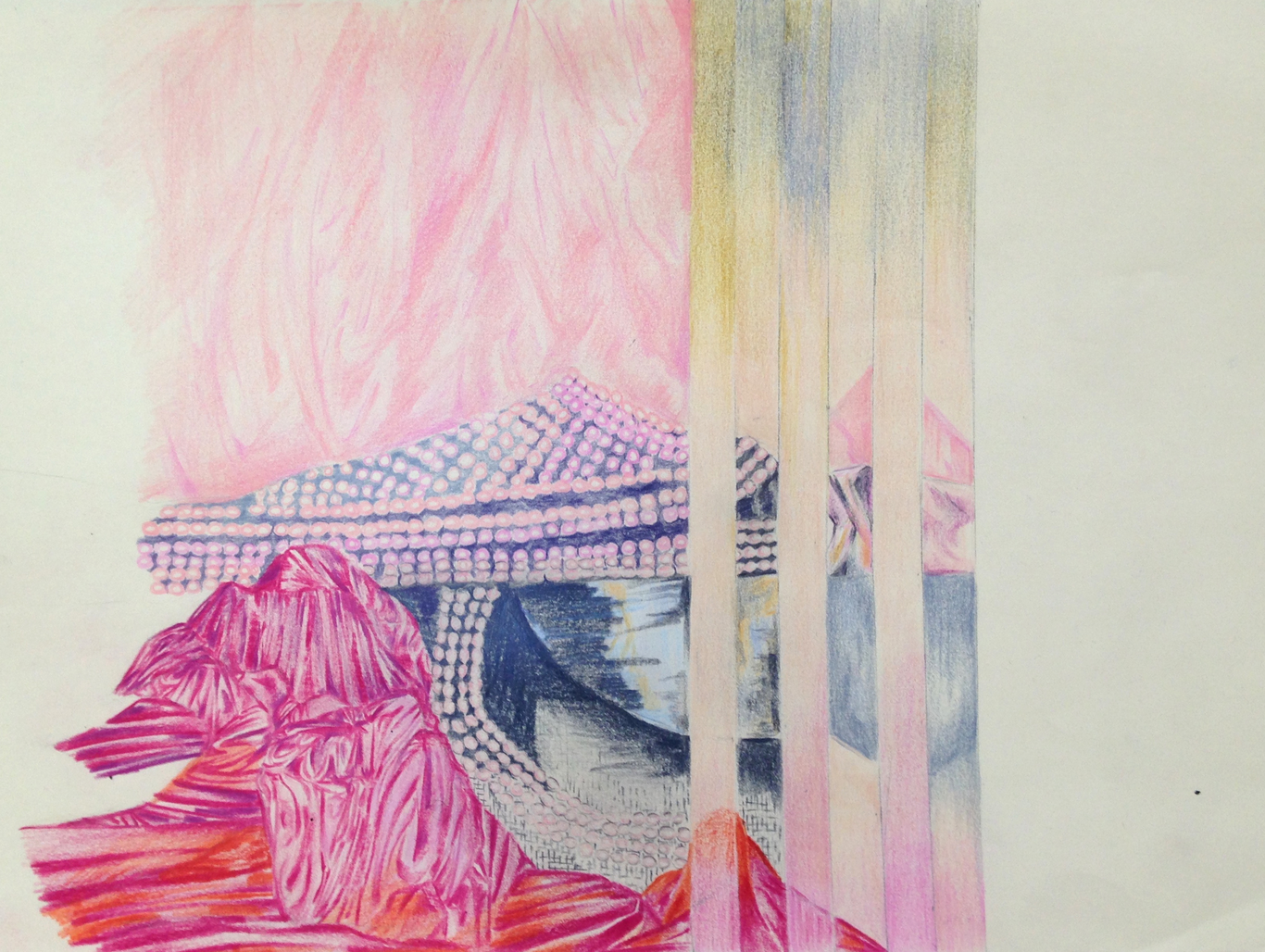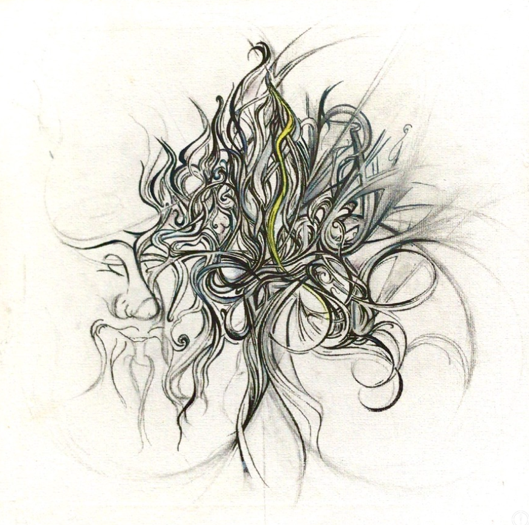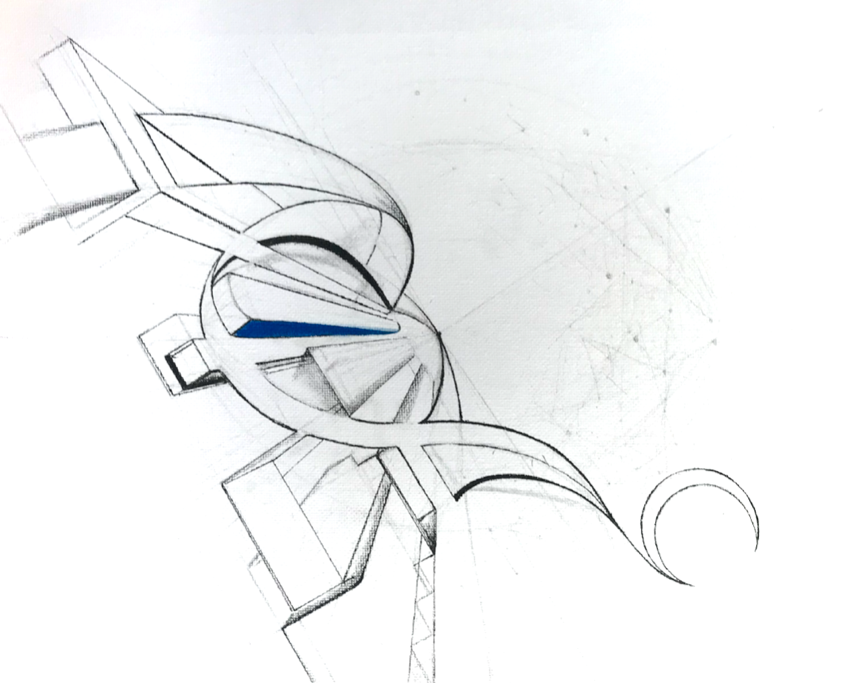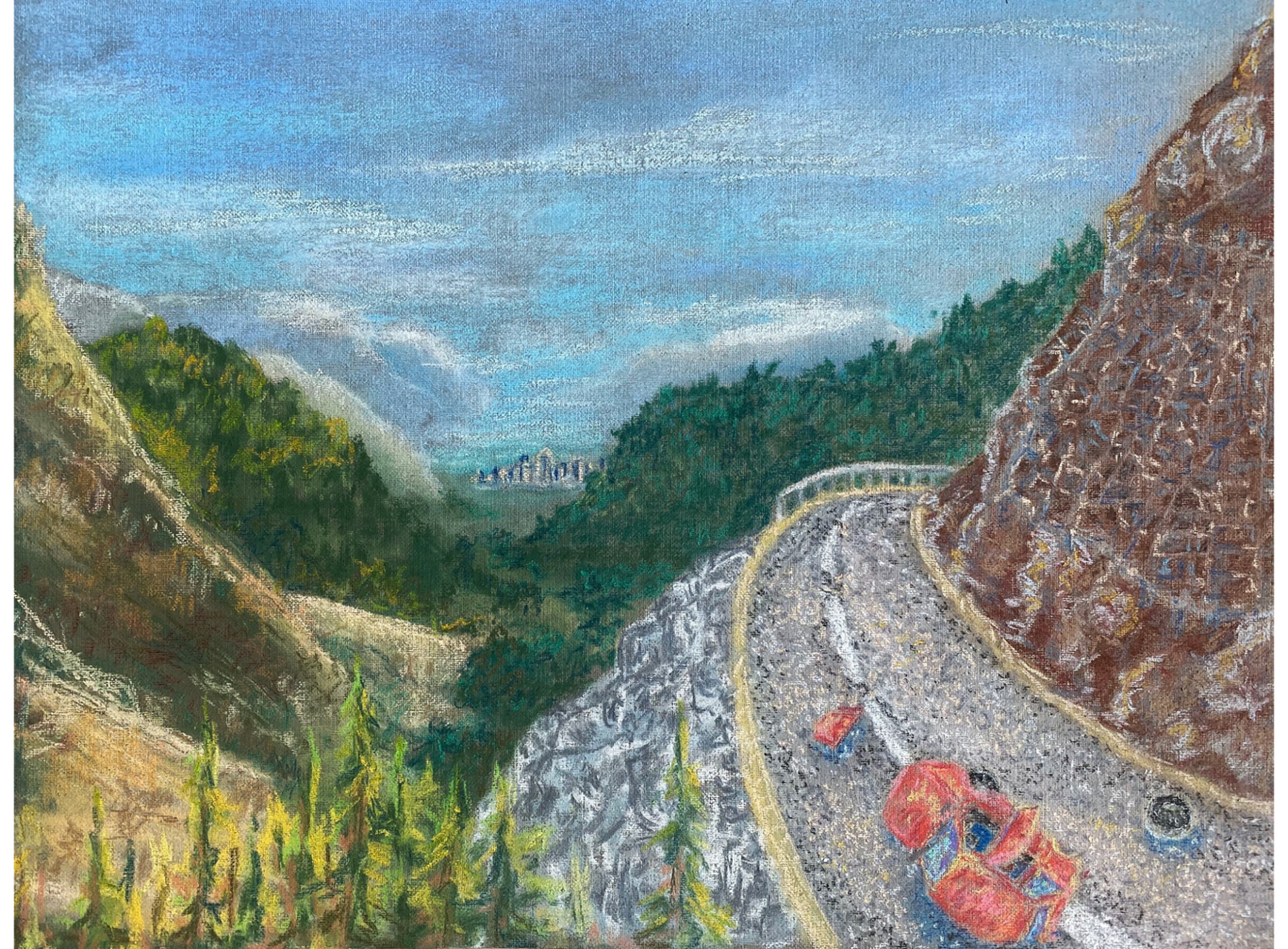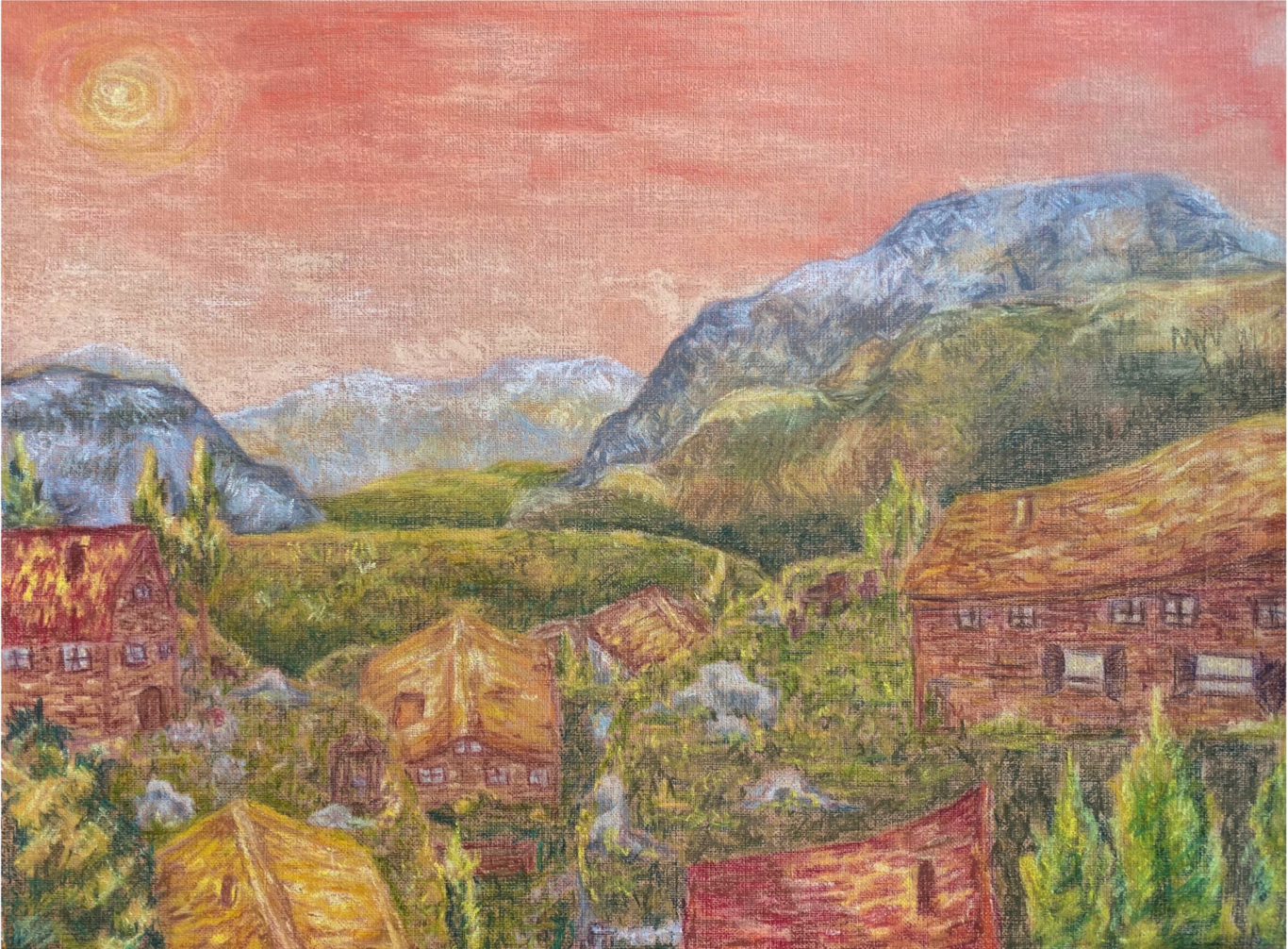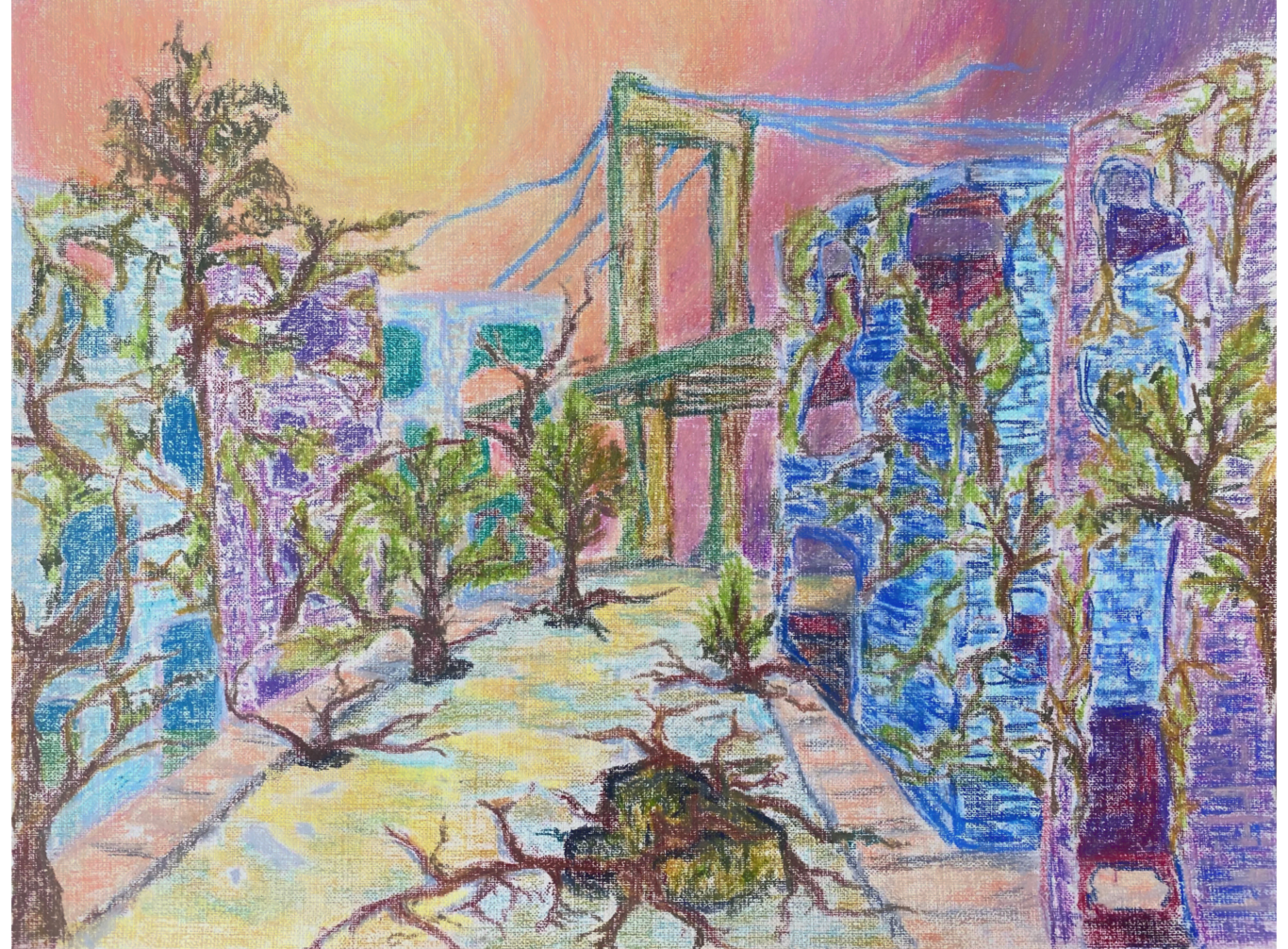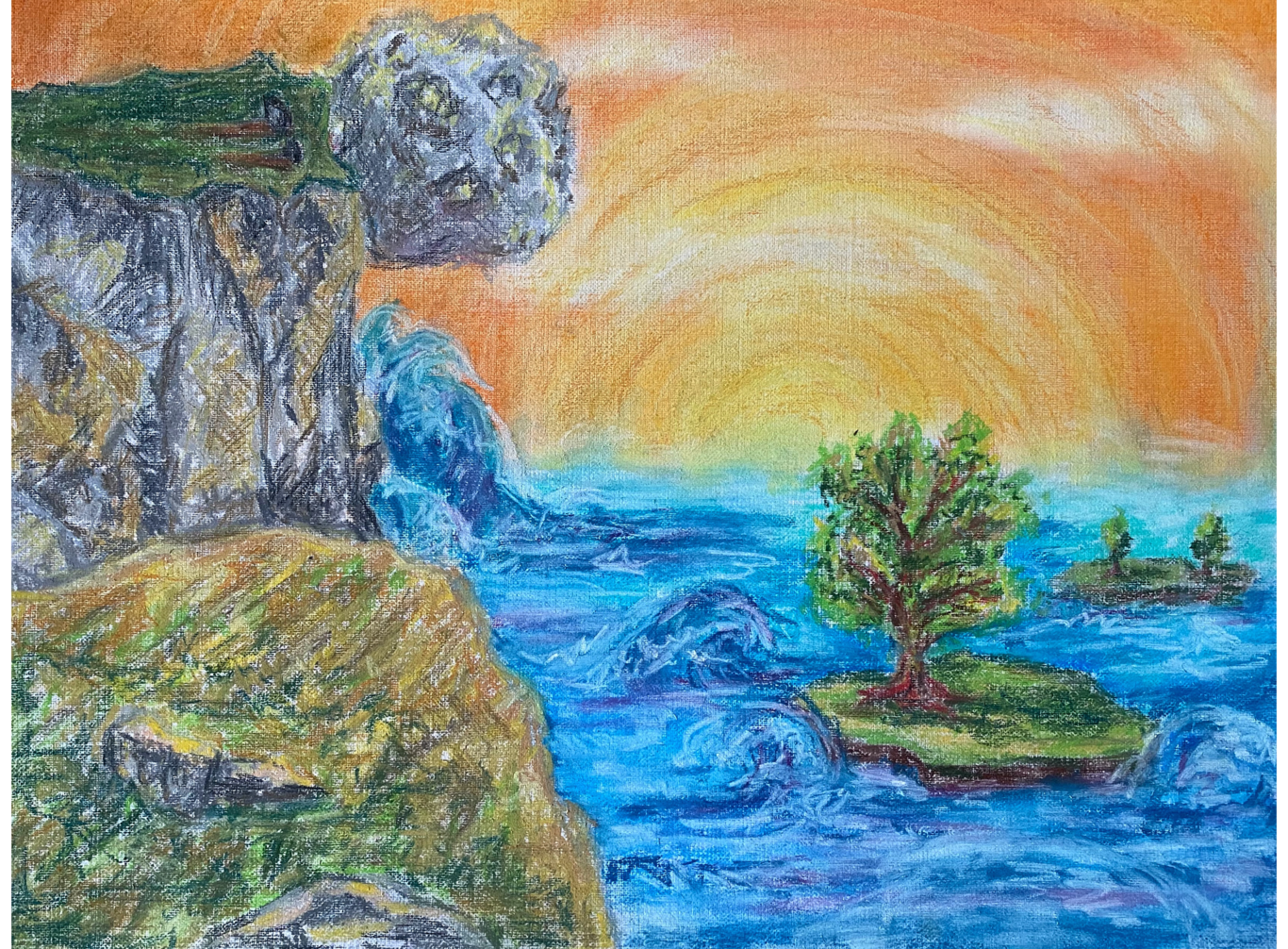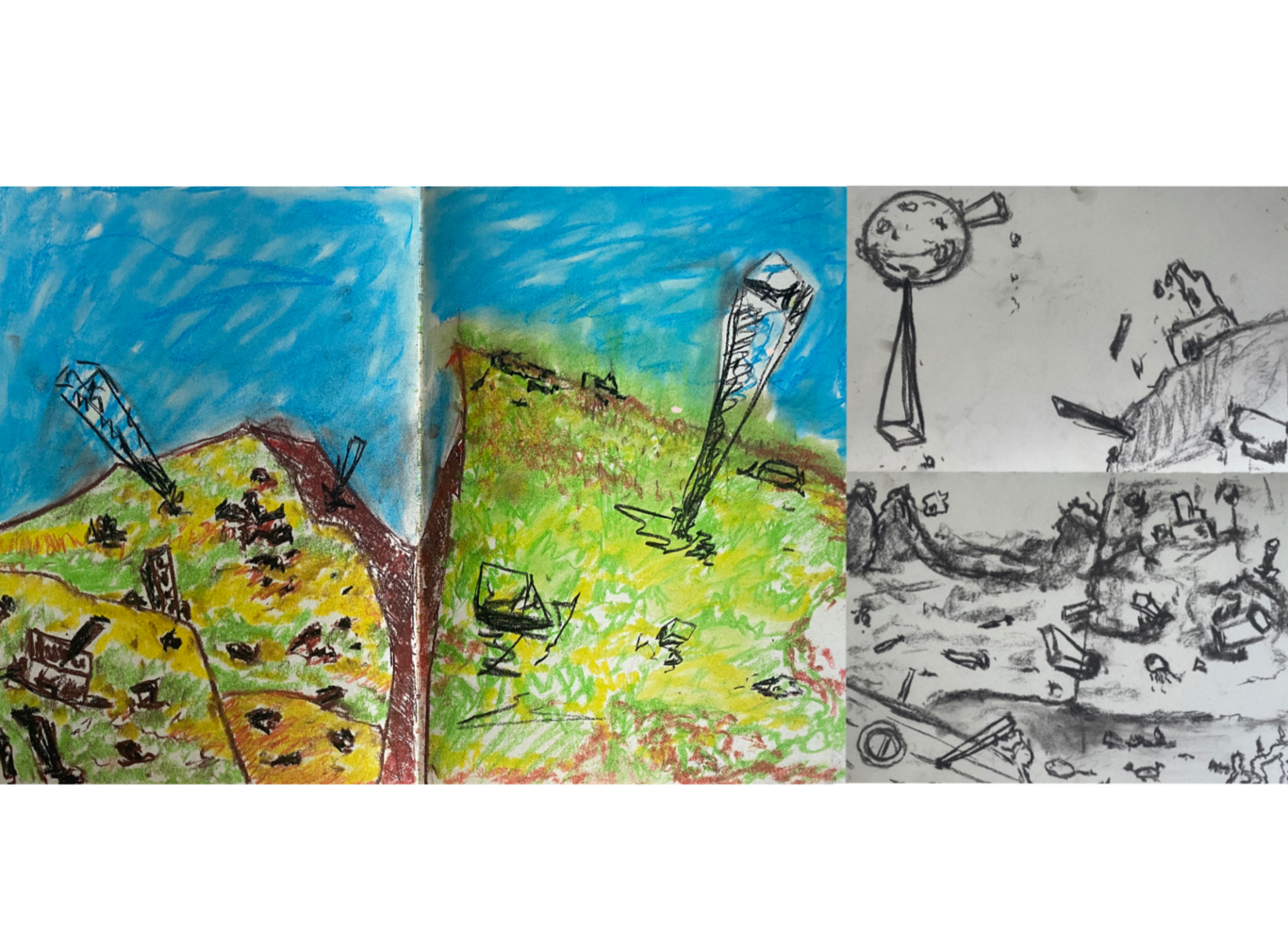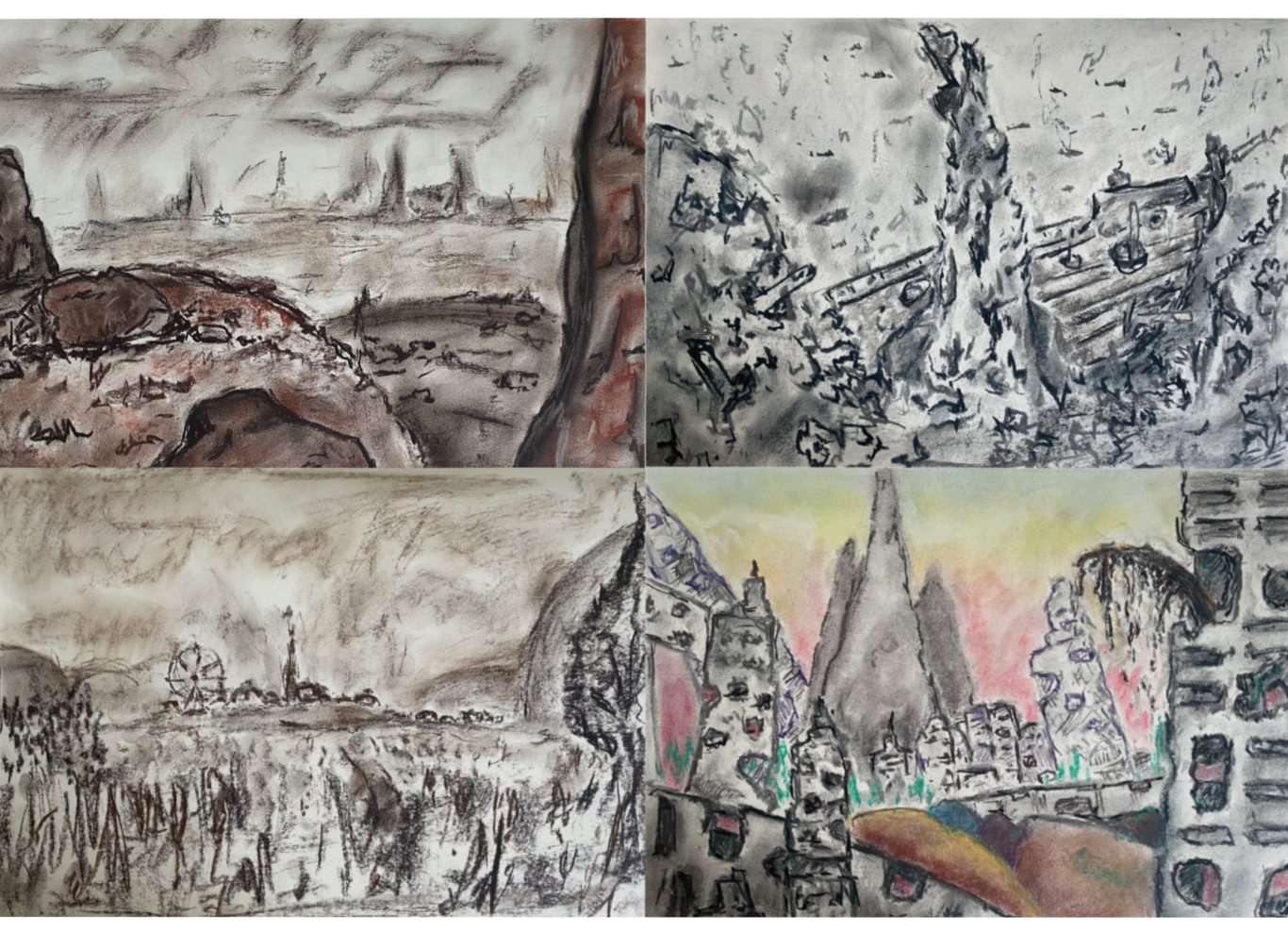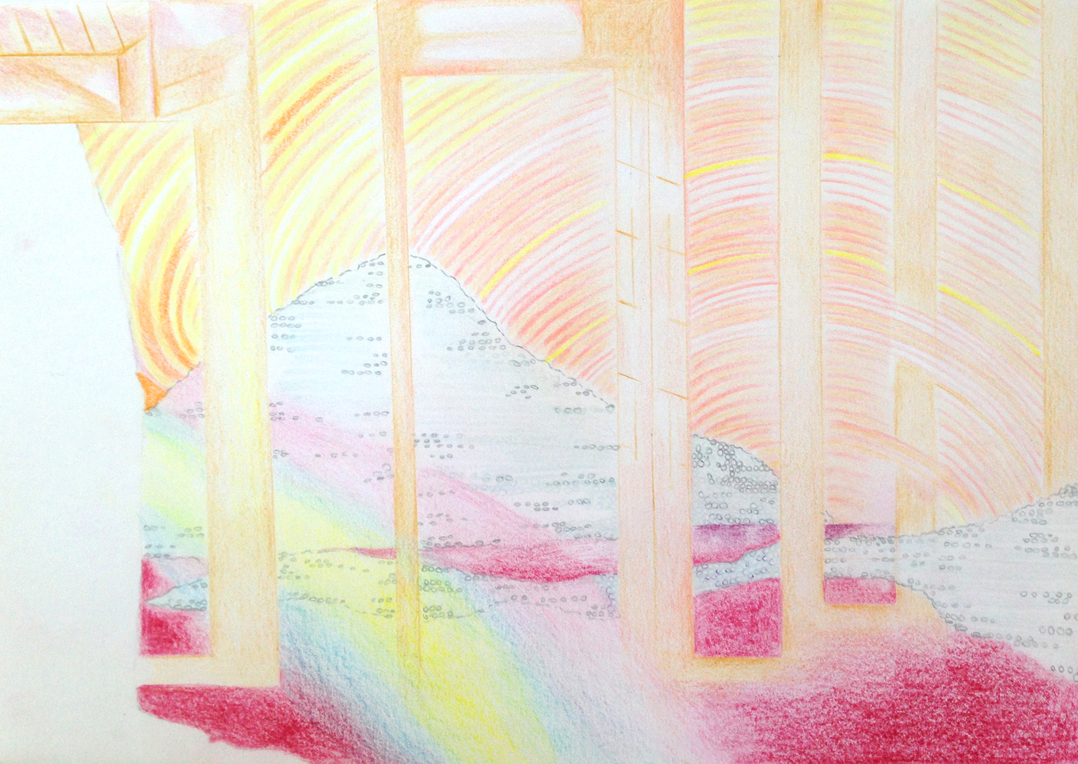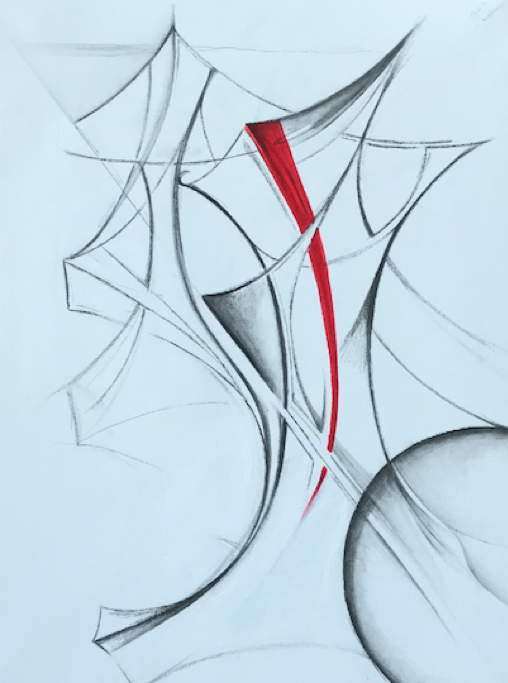Quirijn Dees
As I would normally prefer free hand drawing, I decided to try something different and more technical for this assignment: Perspective drawing. I performed multiple studies in which I experimented with a multitude of vanishing points, the horizon would be projected to all sides of the paper. The first drawing is constructed by a myriad of randomly distributed vanishing points. The studies two and three contain, respectively, twelve and sixteen vanishing points. In the following two studies, I experimented with adding shaded sides. The sixth study consists of a collage in which I used different threads and Eastern ink to then drag and create patterns. In the last two studies, a similar process was employed using stamps.
Study With Random Vanishing Points, 2020, pencil and paper, 14039 x 10200
Study With 12 Vanishing Points, 2020, pencil and paper, 14039 x 10200
Study With 16 Vanishing Points, 2020, pencil and paper, 14039 x 10200
Study With Shaded Sides 1, 2020, pencil and paper, 14039 x 10200
Study With Shaded Sides 2, 2020, pencil and paper, 14039 x 10200
Study With Rope Dragging, 2020, Eastern ink, thread, pencil and paper, 14039 x 10200
Study With Imprint 1, 2020, Eastern ink, random objects, pencil and paper, 14039 x 10200
Study With Imprint 2, 2020, Eastern ink, random objects, pencil and paper, 14039 x 10200
Annienke Mul
In a society with many opportunities, it is difficult to make choices. In this course I reflected on this feeling of indecisiveness. Not failing and being successful in live puts pressure on (young) people. If this gets to you, you end up in a circle of indecisiveness, in which you cannot make choices. I illustrated this feeling by the bound figures in image 1. They are not able to make a decision therefore bound together in a circle. The second image portrays being stuck in a carrousel. When
you are indecisive you start thinking in circles and you can't get off. The last drawing illustrates how to get out of this indecisiveness by taking a step into the chaos.
Stuck, 2020, pastel krijt, 29,7 x 42 cm (A3)
Trying, 2020, pastel krijt, 29,7 x 42 cm (A3)
Walking the Chaos, 2020, pastel krijt, 29,7 x 42 cm (A3)
Lily Li
Between my eyes and hands, everything is flowing, like light and wind. Memory is flowing and I can’t think of a certain scene in my life that I want to keep forever. Many moments of my life are flowing, jumping from one to another. I can never hold any moment but just let it slip from my hands, gone. Only senses are real and they are part of me. They are diving into a porous world, constantly being overlapped and reconstructed. Dwelling with these feelings, we, human, could tightly cling to this world.
Flowing1, 2020, soft pastels, 210mm x 297 mm
Flowing2, 2020, soft pastels, 297mm x 420 mm
Flowing3, 2020, soft pastels, 297mm x 420 mm
Dylan Brown Wilkinson
Ten Pin Corona, 2020,
Happy Earth Day, 2020, drawing
GOP Reaper, 2020, drawing
Eurco Crunch, 2020, drawing
Katrine Zwartjes
The Daughters of Pallas Athena
My master thesis on militant women - where I linked the archetypes of militant women to women from Greek mythology - became the source of inspiration for this series. After a lot of sketching, I chose to work on the monstrous Medusa, the magical mother Medea, and the misanderous Amazon Penthesilea. These women are opposites of the peaceful and beautiful Helen of Troy. The title of my series is ‘The Daughters of Pallas Athena.’ The title refers to another figure from Greek mythology, the goddess of peace and war, wisdom, and the arts. The perfect combination of the Arts academy, the University (with Athena’s Roman equivalent as figurehead), my drawings, my thesis, and militant women.
Medusa, 2020, sennelier oil pastels on mixed media paper, 14,8x14,8 cm
Medea, 2020, sennelier oil pastels on mixed media paper, 14,8x14,8 cm
Penthesilea, 2020, sennelier oil pastels on mixed media paper, 14,8x14,8 cm
Mattie Nelson
My drawings are made up of sketches and mixed media collages. I collect found materials such as string, envelopes and dead insects and play with compositions on a small scale until I find an arrangement I enjoy. I have entitled the teabag sculpture ‘The Fragility of Life’ as it illustrates how short and fragile one’s life is. I gently sewed together used teabags to create landforms in which the dead insects are glued too. In a similar manner we wander over this fragile earth until we come to our death. In other pieces I sewed together envelopes and painted surfaces to create different textures and scenes as I played with the arrangements.
A Settled Mirage, 2020, paint, charcoal, thread, dead lizard on paper, varied vimensions
Aves De Paso, 2020, paint, wool, string, pencil, paint on paper, varied dimensions
The Fragility of Life (series of 3), 2020, teabags, thread, dead insects, charcoal, paint, tree bark, varied dimensions
Collages A and B, 2020, string, tape, envelope, paper, paint, varied dimensions
Bali Angyan
My project is about Attention/Awareness. It’s a pretty wide topic, basically about our magic in us that connects us to the world. The first image is the spiritual/holy perspective on awareness, it is ‘Nature’s Blessing’ and you will definitely feel the rhythm of your attention change out there with the trees and god. The second image is the bit shadier side; stop damaging your mind with tiktok. And the last image I made with my very good friend Zsofia Meszaros, a lot of fun. The poem displayed is by David Whyte, ‘Everything is waiting for you’, it’s a cute poem especially if you’re feeling lonely.
Anna Ziegler
The project explores the essence of existence, the unity of being and the inner workings of consciousness.
Close your eyes, 2020, animation, 1280 × 720 pixels, 29 seconds
The Exhibition
Imagine, drawing, presentation.
The essence of drawing is the representation of reflections of a thought, feeling or idea. This years’ Drawing 02 participants proved to be very enthusiastic and flexible in transforming the new 'teaching and learning online' towards fabulous pieces of art.
At the start of Drawing 02, students were asked to choose a common content wise subject, an abstract idea or concept, based on personal fascination, experience or a social-cultural point of view. Regarding this topic of choice, research and drawing methods are developed. The main goal for this drawing process has been to gain insight into individual interests and artistic possibilities; how to realize this process into a deeper experimental research.
This online exhibition is the visual result of personal experiences of the times we are currently living in, reflecting the above-mentioned drawing process. I would herewith like to invite you to enjoy the outstanding and fantastic results in this great online exhibition. I am certain that these works will trigger your imagination!
Eric Hirdes, Artist & Teacher
Kayla Mackintosh
Truth Before Reconciliation
This piece reflects on the Indigenous relations within Canada, how they have changed, and how they have not. Each piece interconnects the past and the present. I am a non-Indigenous Canadian citizen and working on this piece forced me to grapple with my national identity, and my relationship with my country and its history. As an artist, I believe it is important to dive into subjects that people refuse to look at or acknowledge simply because the past and even present is hard to accept. Canada has installed a Truth and Reconciliation Commission to address the treatment of Indigenous peoples, however, sometimes society would rather have reconciliation, without looking at the truth first.
The Vision of Cornwallis, 2020, pen ink, and oil on paper, 23x19.5 cm
La Petite Méprise, 2020, pencil, oil and thread on paper, 27x18.5 cm
Something smells in Alberta, 2020, pencil and oil on paper, 23x19.5 cm
Inés Jiménez Martínez
'She evolves' is the result of my interpretation of the power of Mother Nature. The miracle of life is an endless circle of nature, where evolution occurs. The tree simbolizes all of this, from seed to grown tree, creating new seeds. The figure of the woman is visible because the femenine energy is a force of creation, and women are connected to it as their bodies are capable of growing a new life inside of them. In so far as Mother Nature perpetuates the circle of life, evolution comes with deeper awareness of the colorful world around us. Hence, this evolution is expressed through the appearence of colors, where the new seed is surrounded by them. She evolves.
She evolves, 2020, 33 pages of A4 white paper, pencil and color pencils, 21,0 x 29,7 cm (A4 paper size)
Charlotte Arnoldy
Student Life
This series of six works represent the good, the bad and the ugly of student life. The student life is one of ups and downs, which can feel quite overwhelming. From the party’s to the late nights studying in the library and from the dirty student kitchens to one night stands. This series shows that is not only about the end result of graduating, but also about having fun on the way there. While the project started out wanting to depict student life as it is, due to the corona crisis it now also shows what students are missing. It is, also in that way, an homage to student life.
To Do, 2020, marker on paper, 29,7 x 42 cm (A3)
Dirty Kitchen, 2020, marker on paper, 29,7 x 42 cm (A3)
Studying, 2020, marker on paper, 29,7 x 42 cm (A3)
Borrel, 2020, marker on paper, 29,7 x 42 cm (A3)
One Night Stand, 2020, marker on paper, 29,7 x 42 cm (A3)
Graduation, 2020, marker on paper, 29,7 x 42 cm (A3)
Charlotte Meyer
The video Life, Death & Meaning, comprising of 276 frames (or images) was originally ment to have 476 frames because it ought to have a repitive spirit, like life does. After the embryo grows old and turns back into a snake egg, the original video would go through that same circle of the snake eating itself and turning into a human embryo before the snake swallows the image in the end. It goes to show that while our lives are not all the same, we go through the same cycle of birth, ageing and, eventually, death. I often find myself wondering why we are here, if we have a purpose and with this video I aim to respond to those very questions with: There is no answer.
Life, Death & Meaning, 2020, Animation Desk (Online Paint tool)
Hester Be
In my drawings, I investigate the ways in which the surroundings and places in which I live have effect on my life. As an Art History student, I love to travel across the country and visit cities and museums. In these days, this is almost impossible and I spend my days staying at home, remembering places I have visited. However, the contrast between the ‘real’ and ‘remembered’ world still remains present, as can be seen in Garden and Robe. In Overcast, the ‘old’ world, which is represented by the unreachable floating city, keeps following me and casts a shadow on my life, as I wander through a city which has turned into a rocky desert because everything is closed.
Garden, 2020, Indian ink and water-soluble pencil on paper, 27 x 34,5 cm
Robe, 2020, Indian ink, coloured inks and gold and silver inks on paper 34,5 x 27 cm
Overcast, 2020, Soft pastel and Conté on blue-grey paper, 50 x 65 cm
Kim Engels
Dreams are invisible. Only you can see them very clear, you are living in another world. A world just yours, away from the whirlwind of life. The next second it can all be blind. Awoken from everything that has happened. In my project I visualized the invisible of my own dreams.
Falling or Climbing, 2020, acrylic and fineliner on paper, 33 x 45 cm
Sea, 2020, acrylic and fineliner on paper, 33 x 45 cm
Disappearance, 2020, acrylic and fineliner on paper, 33 x 45 cm
Moving Trees, 2020, acrylic and fineliner on paper, 21 x 30 cm
Shadows, 2020, acrylic and fineliner on paper, 21 x 30 cm
Confused, 2020, fineliner and marker on paper, 21 x 30 cm
Erika Riccobon
Il Pianeta Estinto
My project Il pianeta estinto (Italian for a planet whose civilization has long gone extinct) aims at representing an ideal life-less dimension. In contrast with the post-apocalyptic scenarios we have grown accustomed to through art and cinema, I wanted to convey the idea that the extinction of civilization could entail a condition of harmony---even bliss. The primary source of inspiration for this project is Dissipatio H.G., a science fiction novel from the 1960s penned by visionary author Guido Morselli. Another source of inspiration was work on imaginary landscapes for science fiction movies. I represented this idea of extinction as peace rather than destruction through a selection of pastel colours and digital collage and pencil drawing techniques.
The Dawn 1, 2020, digital collage, 17 x 23, 5 cm
Unveiling Reality, 2020, color pencil on yellow paper, 21,3 x 30 cm
The Dawn 2, 2020, color pencil on white paper, 21,3 x 30 cm
Florien Smit Sibinga
The relationship between humans and animals has always been a fascinating one, even more fascinating when the animal is depicted as a human. An article from Rene Ebersole and Jasper Doest (photographer) in the National Geographic (March 2020) sparked my interest and inspiration. I decided to experiment with the image of monkeys (Macaque) in Japan. On the one hand the Macaques are seen as holy animals but on the other hand they are treated as slaves for entertainment and are even seen as pests. By using different materials such as oil pastels and soft pastels in opposition, as well as paper collages and pen, I hoped to illustrate this duality.
Kimono, 2020, pen, soft pastels, paper collage, cardboard, 29,7 x 42 cm (A3)
Mask, 2020, pen, paper collage, soft pastels, cardboard, 29,7 x 42 cm (A3)
Invisible, 2020, pen, pencil, soft pastels, thick paper, 29,7 x 42 cm (A3)
Duality, 2020, oil pastels, pen, soft pastels, pencil, watercolours, 29,7 x 42 cm (A3)
Vase, 2020, pen, soft pastels, 29,7 x 42 cm (A3)
Shadow, 2020, watercolour, pen, 29,7 x 42 cm (A3)
Curiosity and Hope, 2020, pen, soft pastels, paper collage, A2
Elena Mansour
My theme for the semester represents a central paradox of life: ‘Chaos and Order’. Each image, depicting the embeddedness of chaos with order, appeals to this basic conundrum that characterizes the human condition, and encourages our confrontation with these juxtapositions without falling into the trap of moral nihilism. Myster Y, embodying the philosophy of holism, represents the foundation of everything. The Path testifies to the illusion of a harmonious relationship between chaos and order, whereas the two are inextricably intertwined. Where do you draw the line is our impression of order that is constructed within a new state of chaos. The aesthetic expressed here is that one can always find comfort in the complexity, abstraction and arbitrariness of things.
Myster Y, 2020, uni pin black fine liner (0,1mm 0,2mm 0,8mm), 30 x 30cm cm
The Path, 2020, graphite pencil, uni pin black fine liner (0,1mm 0,2mm 0,8mm), 24 x 30 cm
Where do you draw the line, 2020, watercolor pencil, acrylic paint, 30 x 40 cm
Liza Klimova
What would happen if suddenly the planet became unpopulated? How would it react? What types of human traces would be left? The series When We Disappear... takes a look on a world that is left behind by humankind. Allowing imagination to take over, the drawings offer a possible vision of how events would progress in the following hours, days, weeks, and then years after humankind leaves. The vision is neither positive nor negative but is left ambiguous for one to decide what the outcome is. Studies #1 and #2 are explorations of possible forms, colours, and scenarios that were done in preparation for the final series.
1 Hour (When We Disappear...), 2020, soft and hard pastels on coloured paper, 40 x 30 cm
10 Days (When We Disappear...), 2020, hard pastels and colour pencils on coloured paper, 40 x 30 cm
100 Months (When We Disappear...), 2020, hard pastels on coloured paper, 40 x 30 cm
1000 Years (When We Disappear...), 2020, colour pencils, hard and soft pastels on coloured paper, 40 x 30 cm
Studies #1, 2020, soft pastels and charcoal on paper, 60 x 40 cm
Studies #2, 2020, charcoal and brown pastels on paper, 30 x 21 cm
